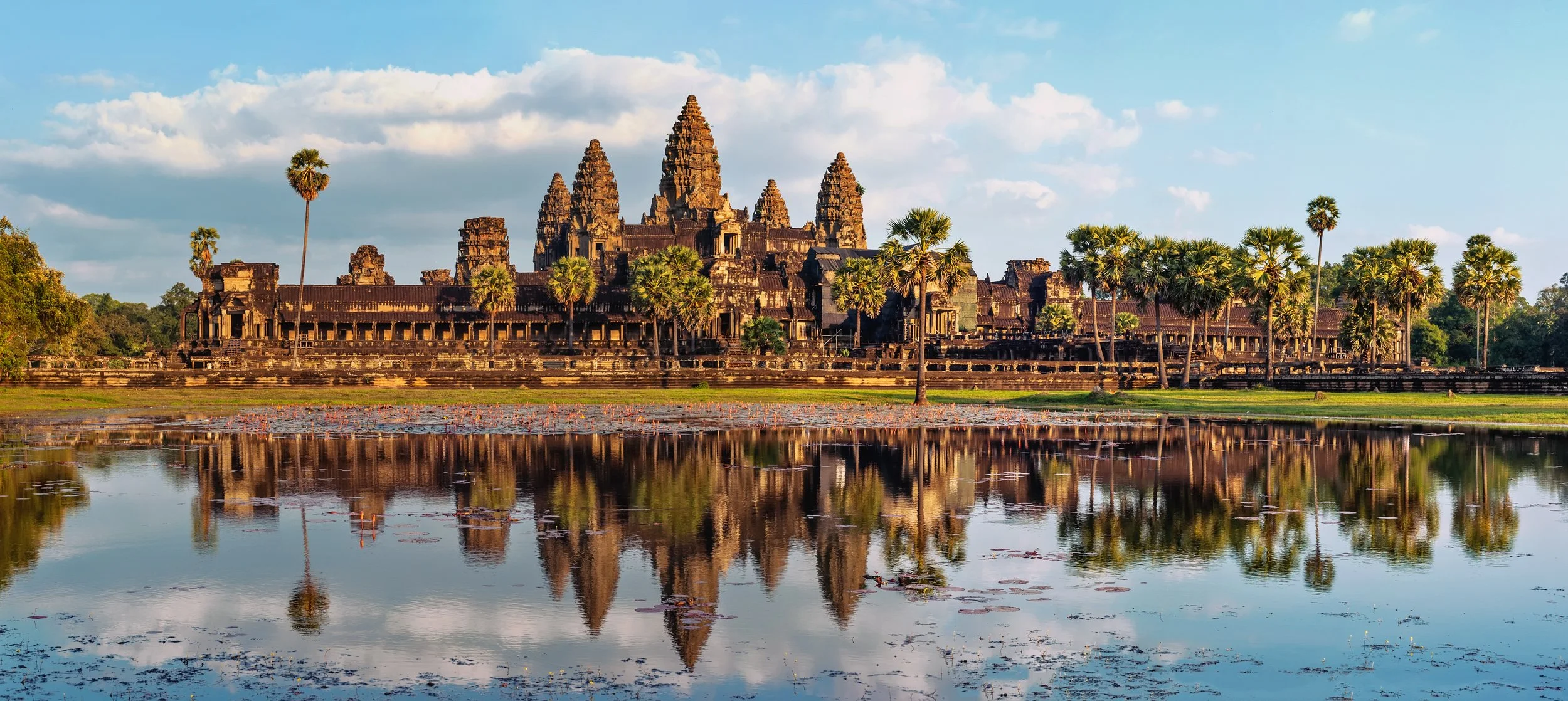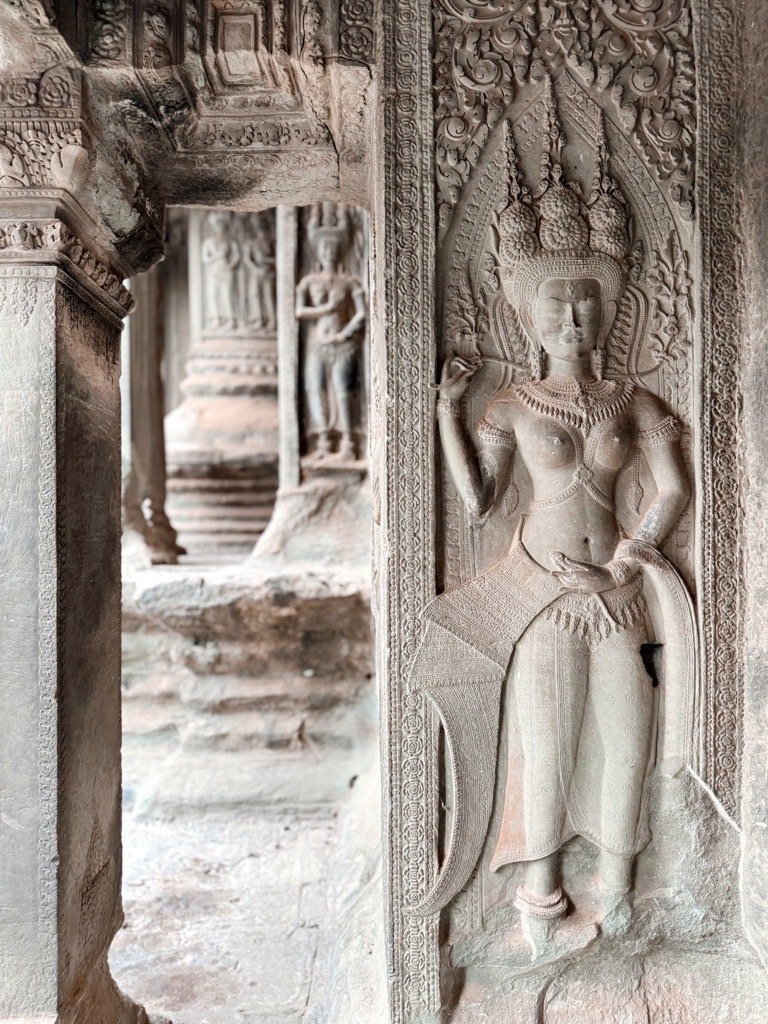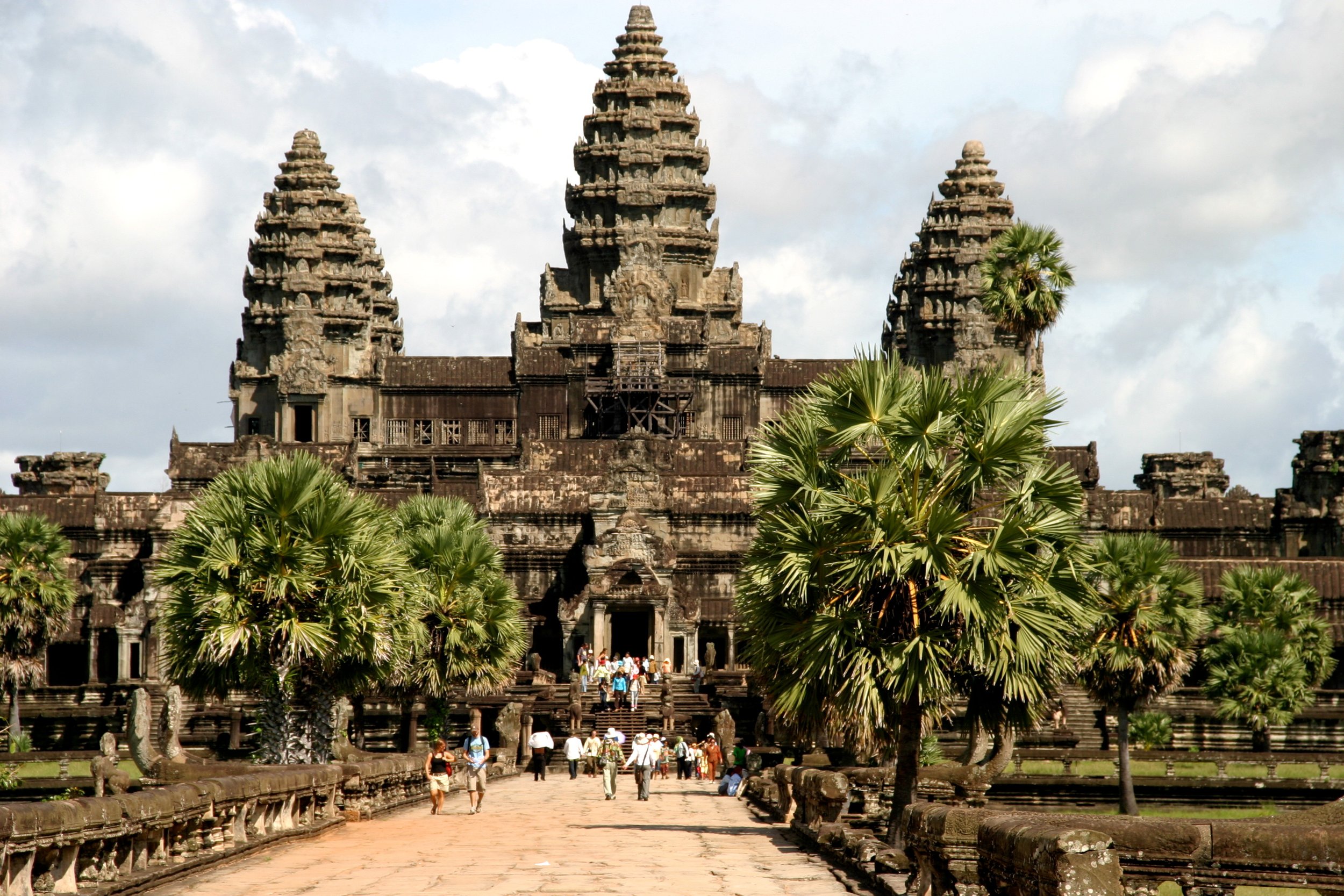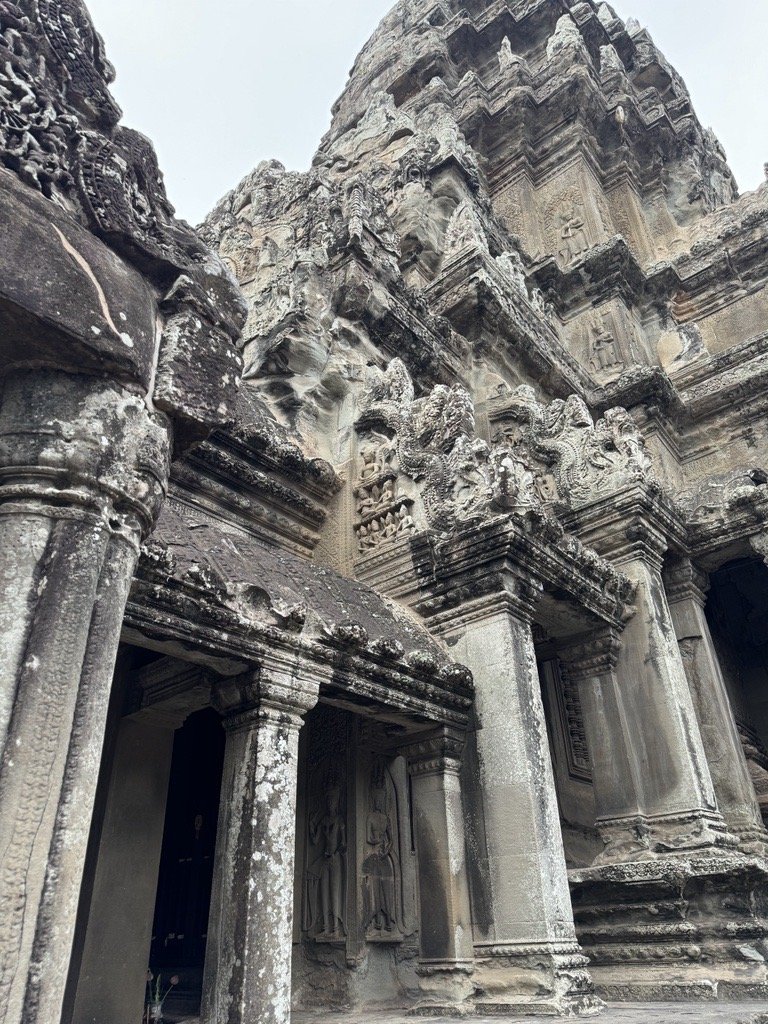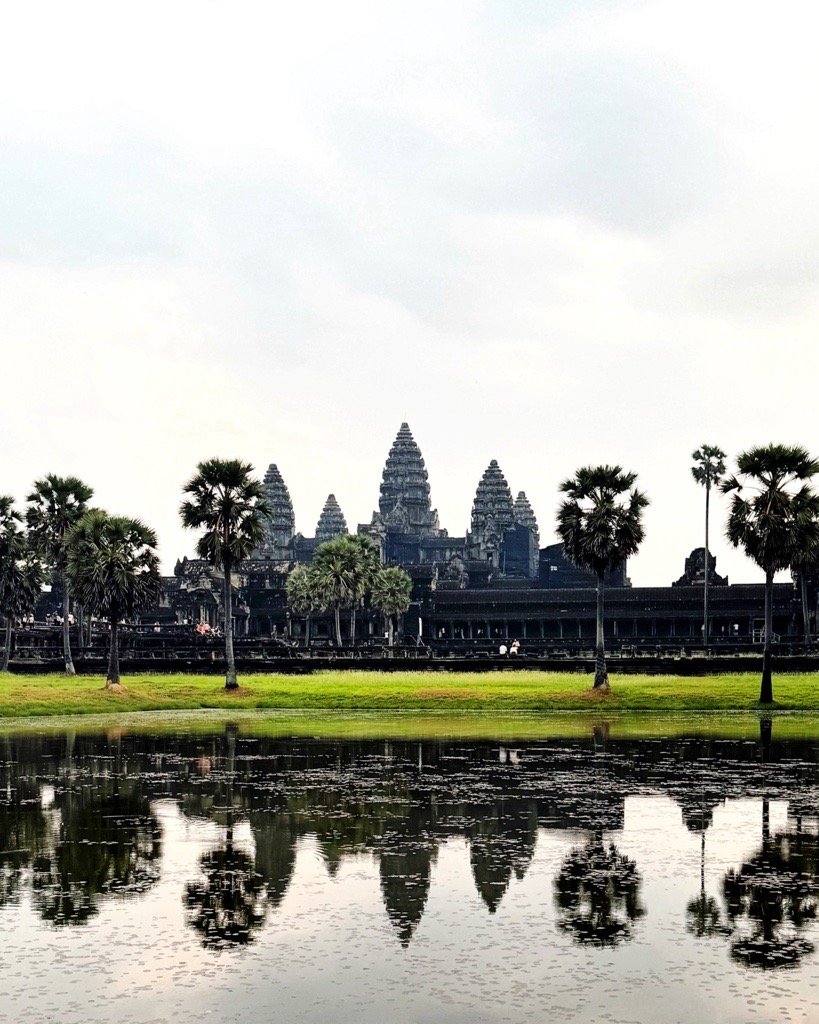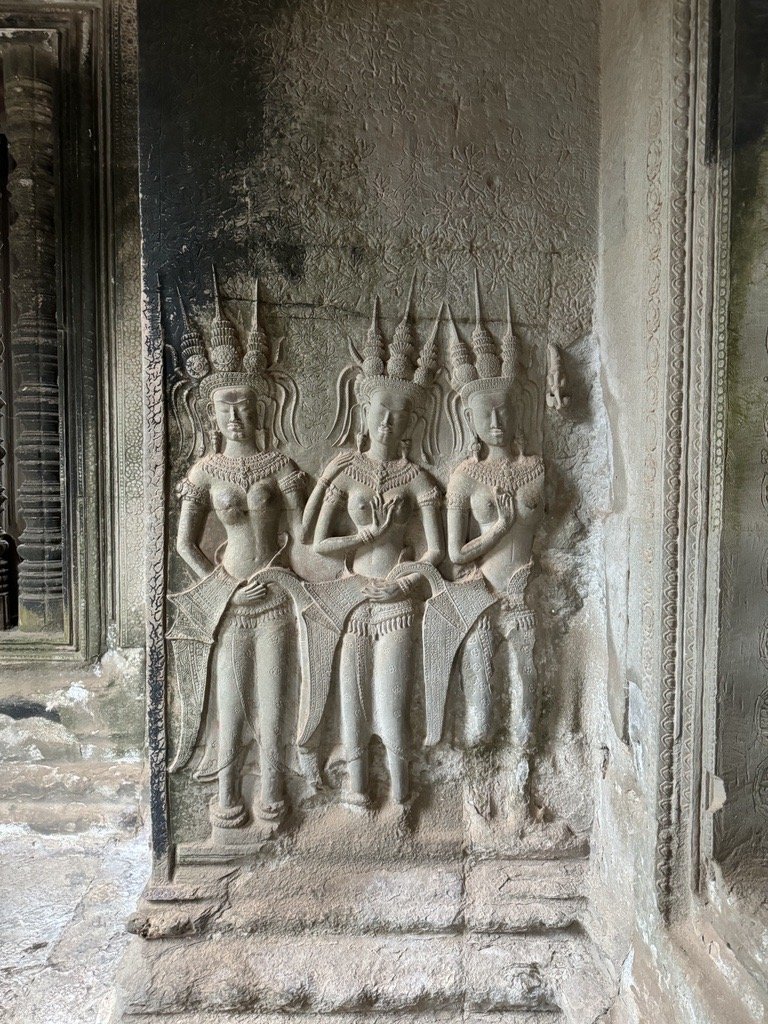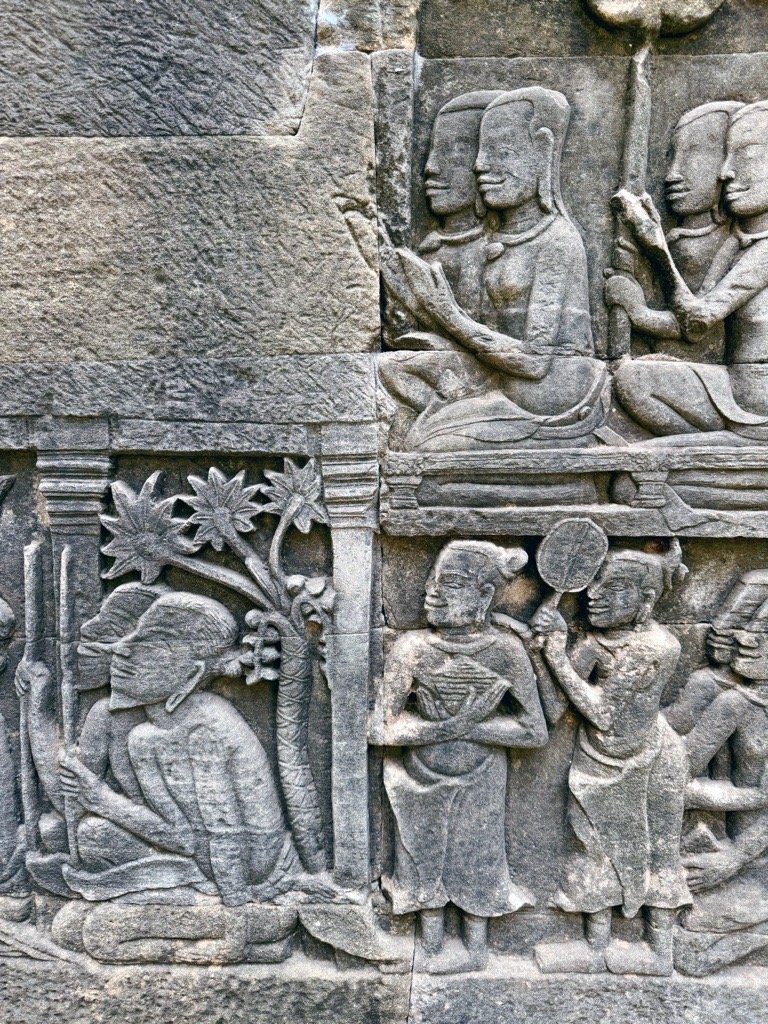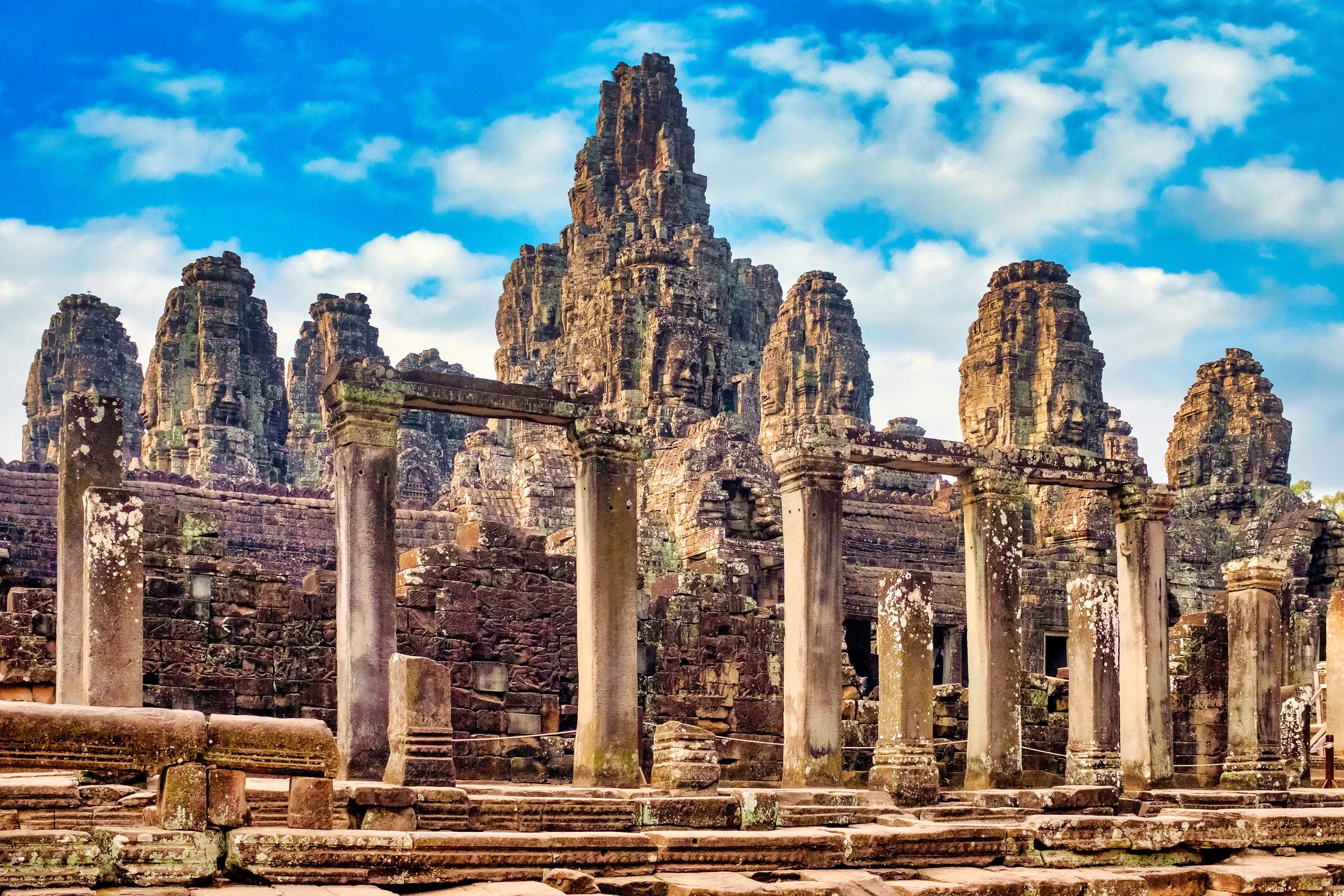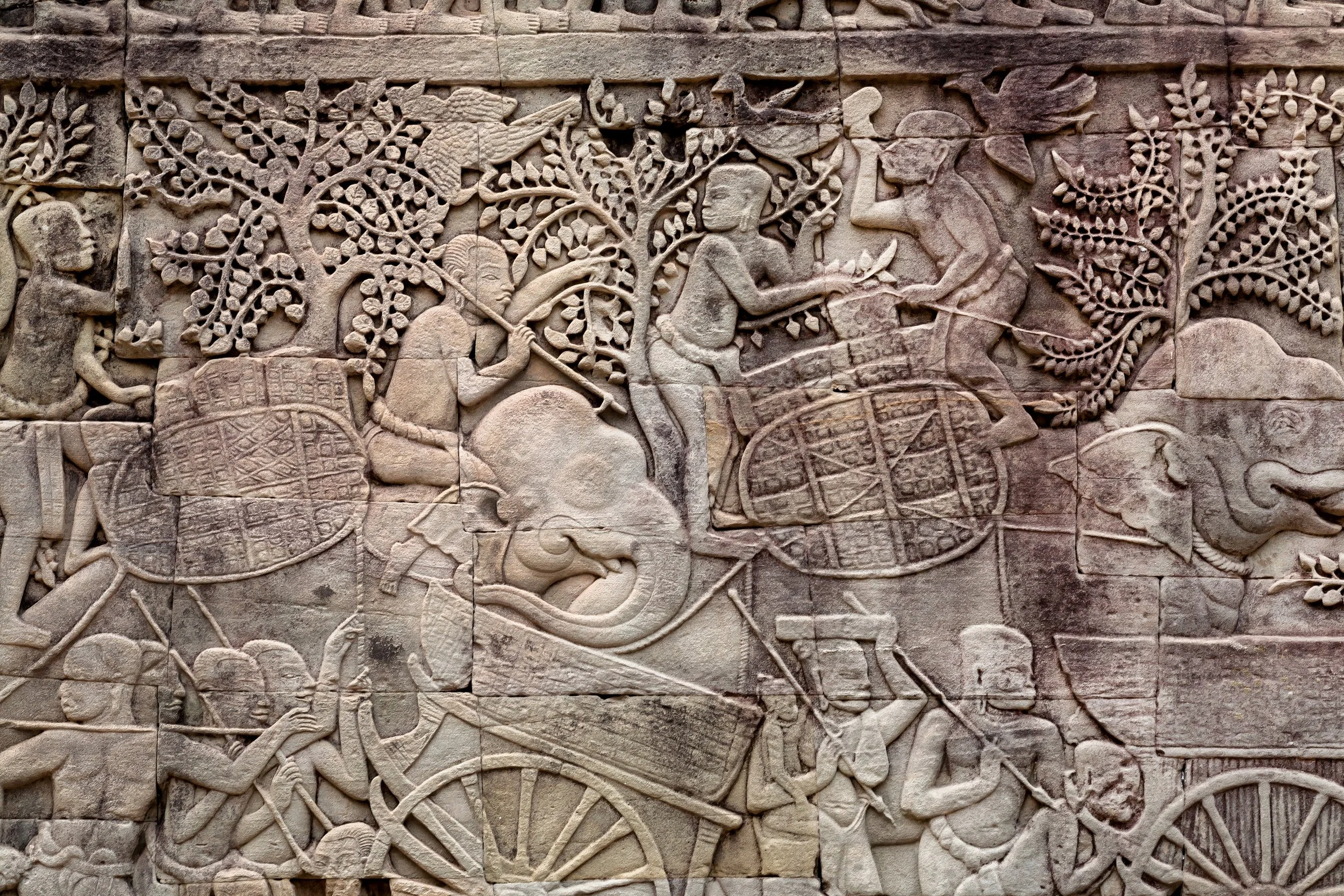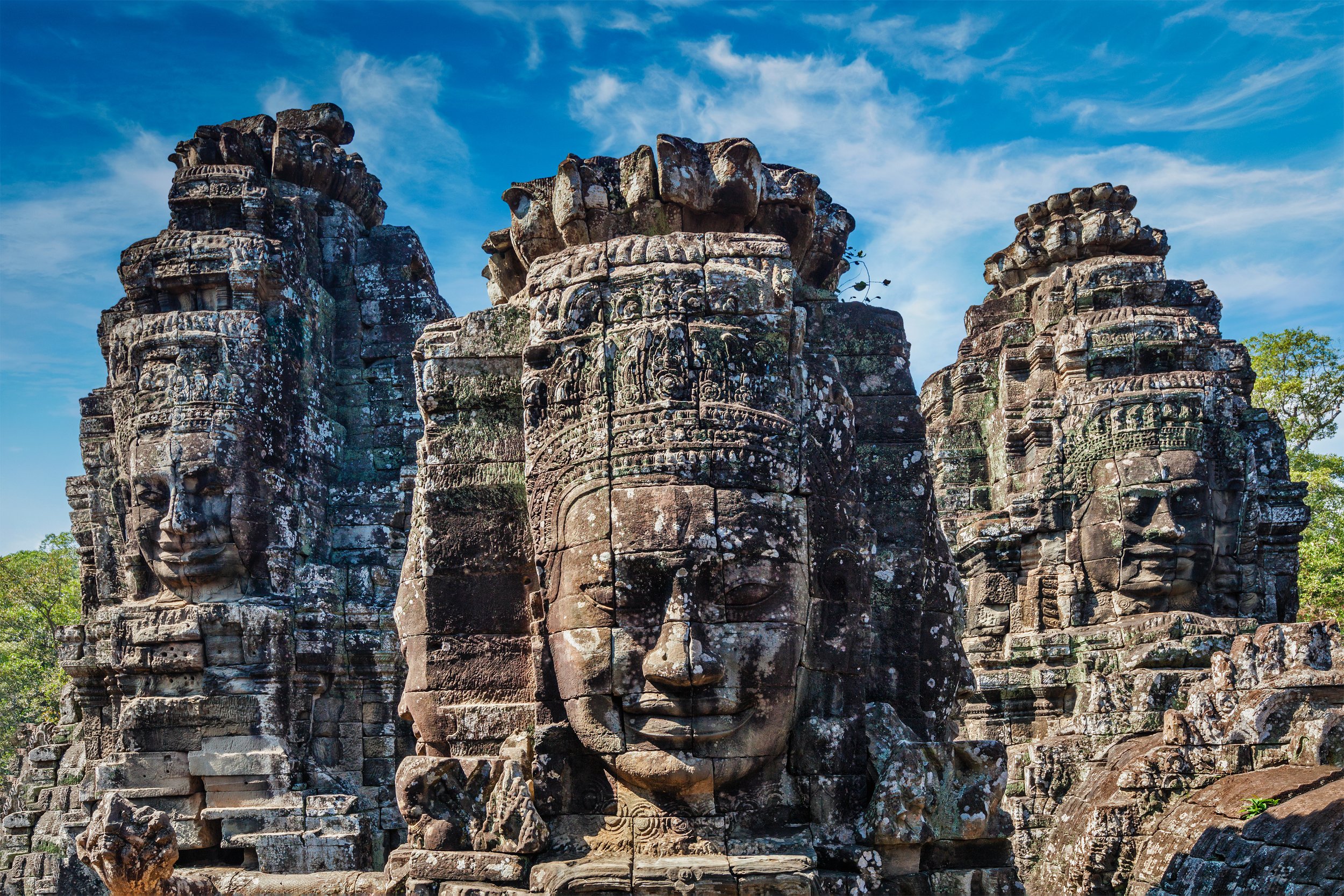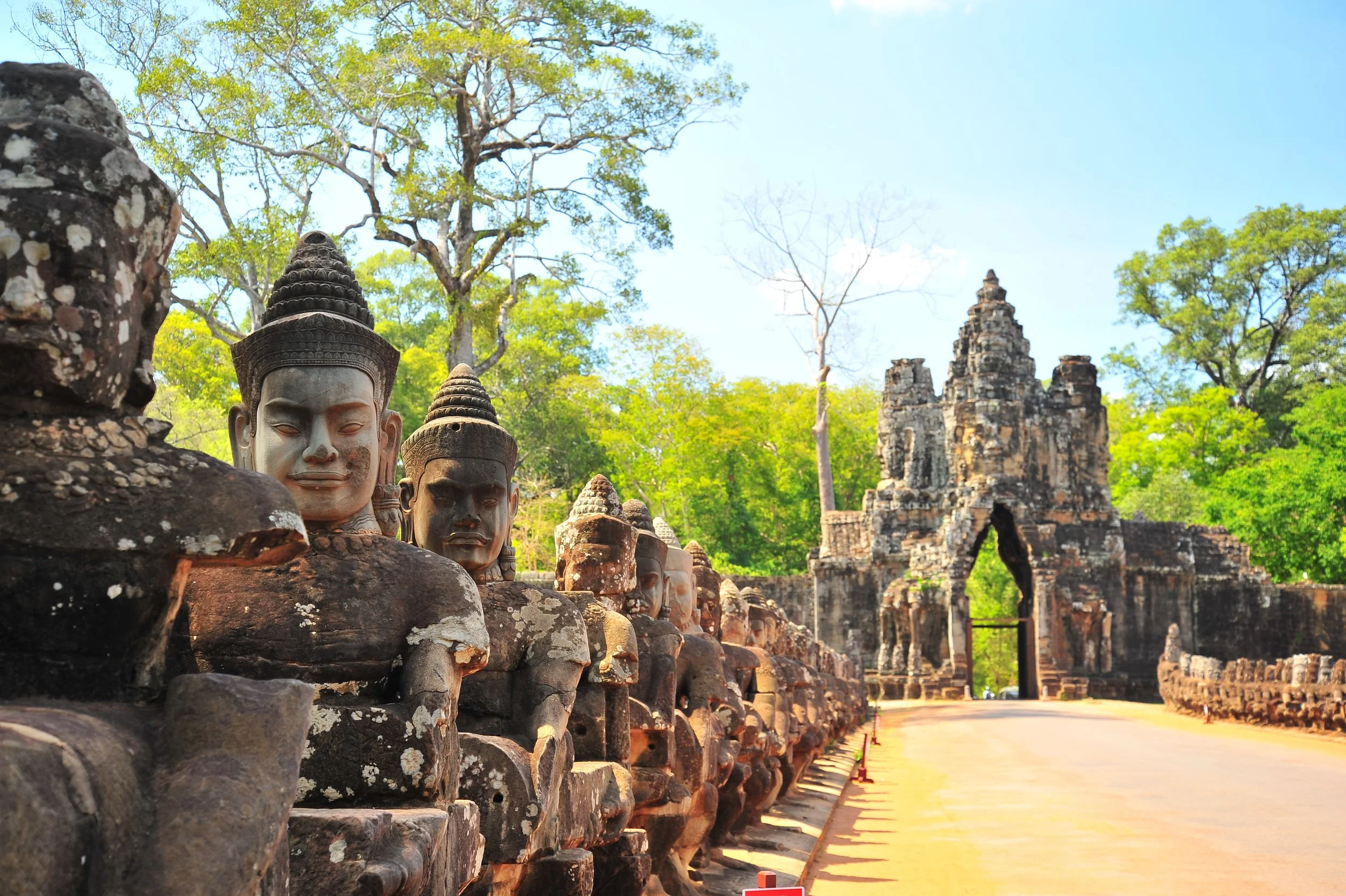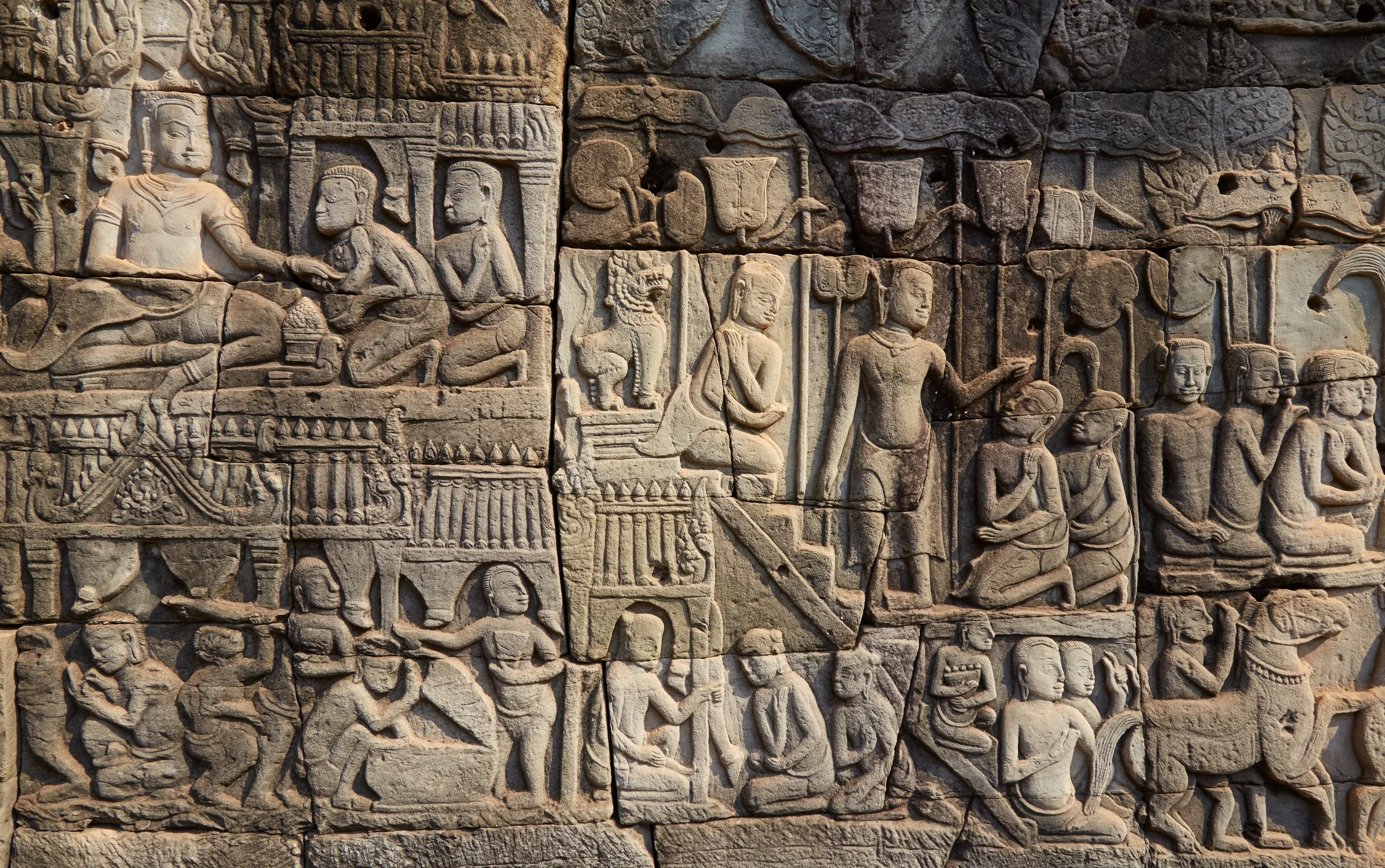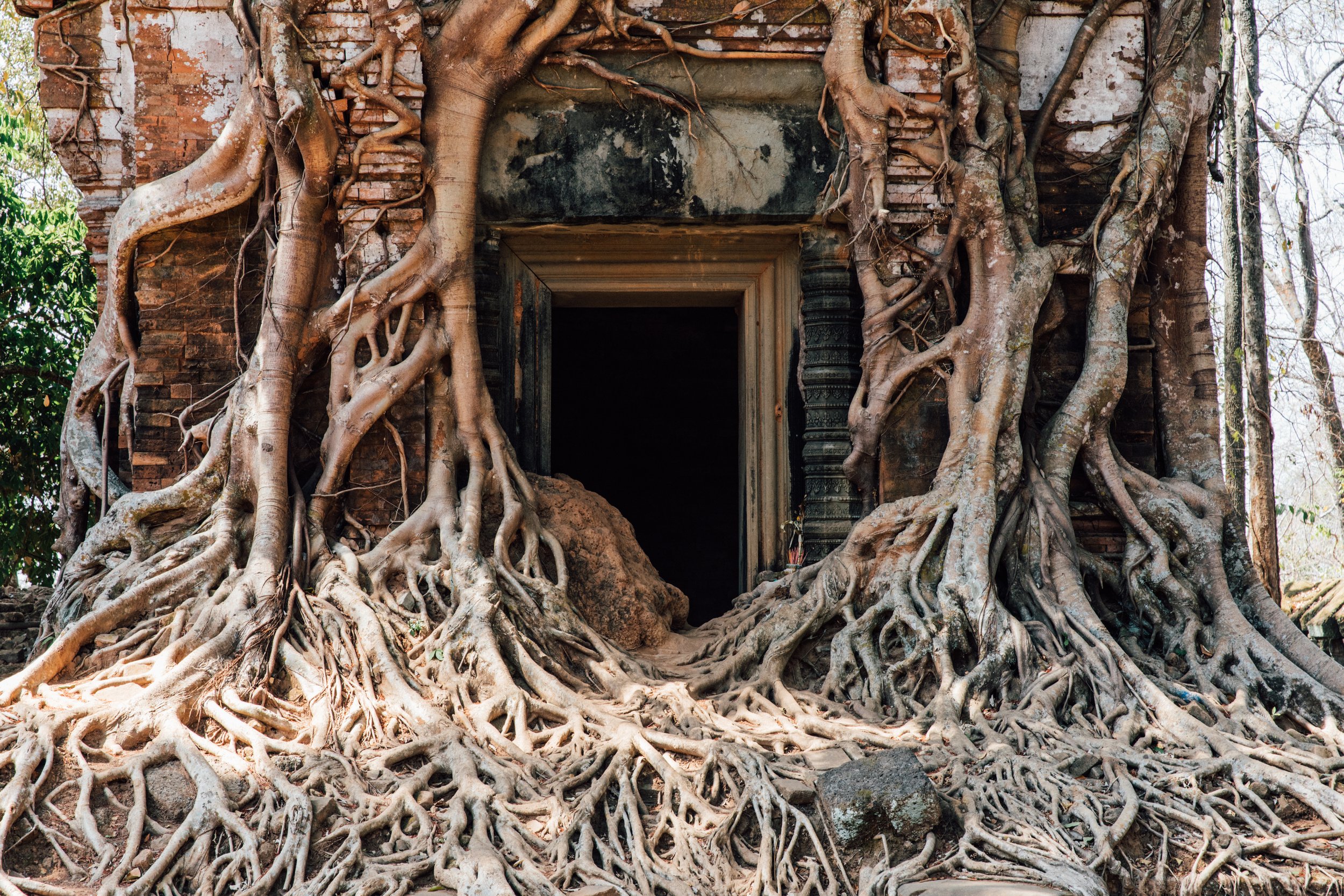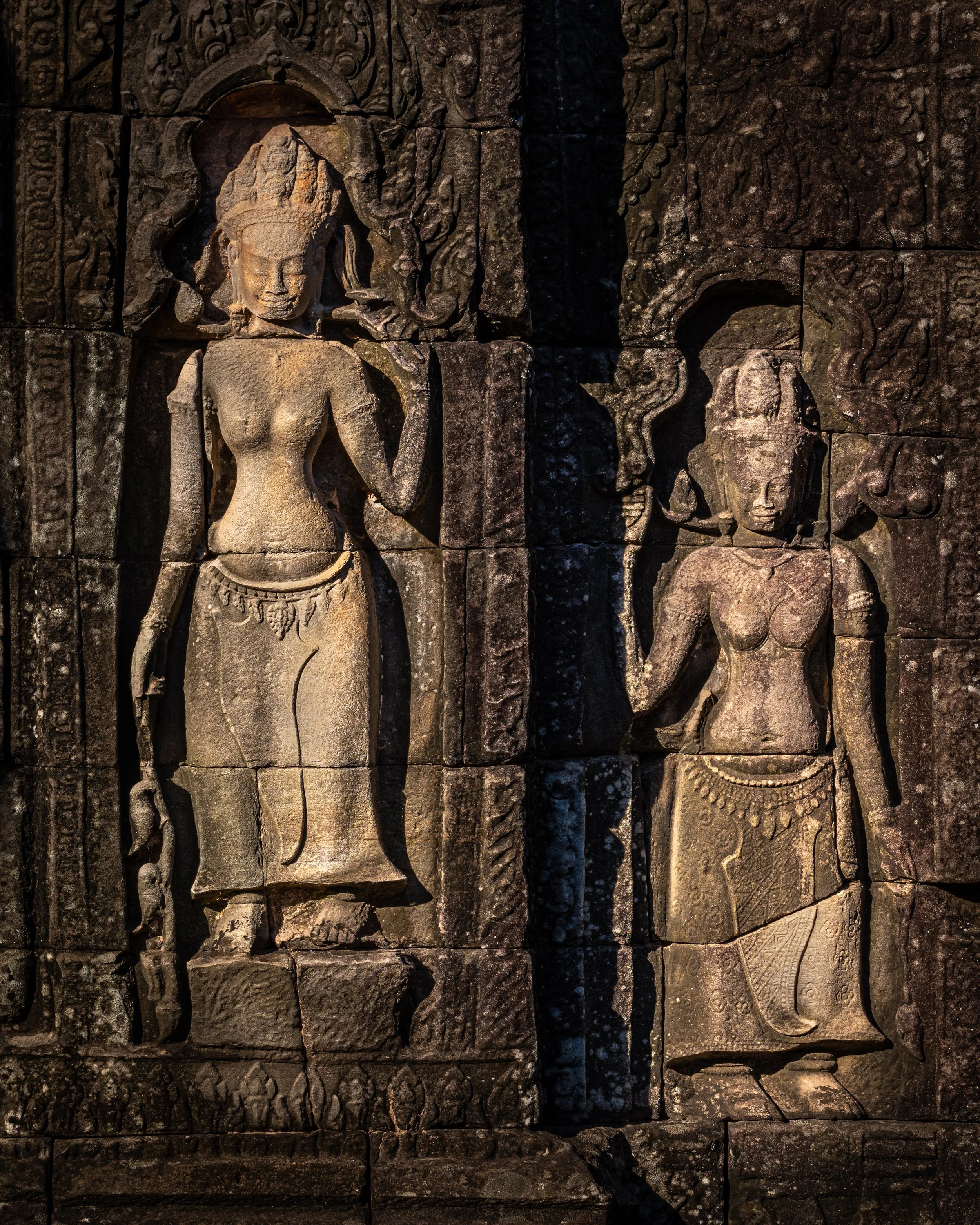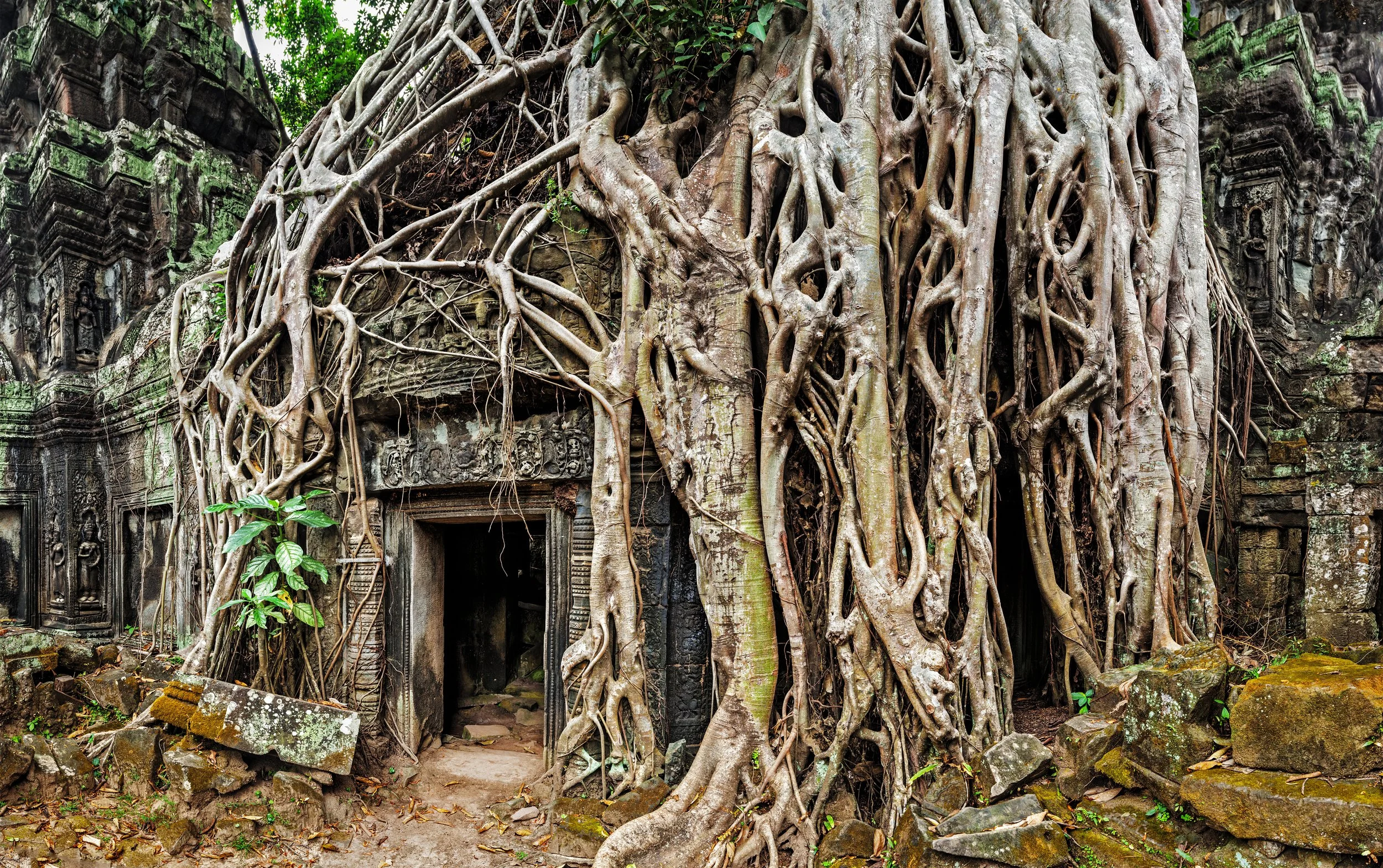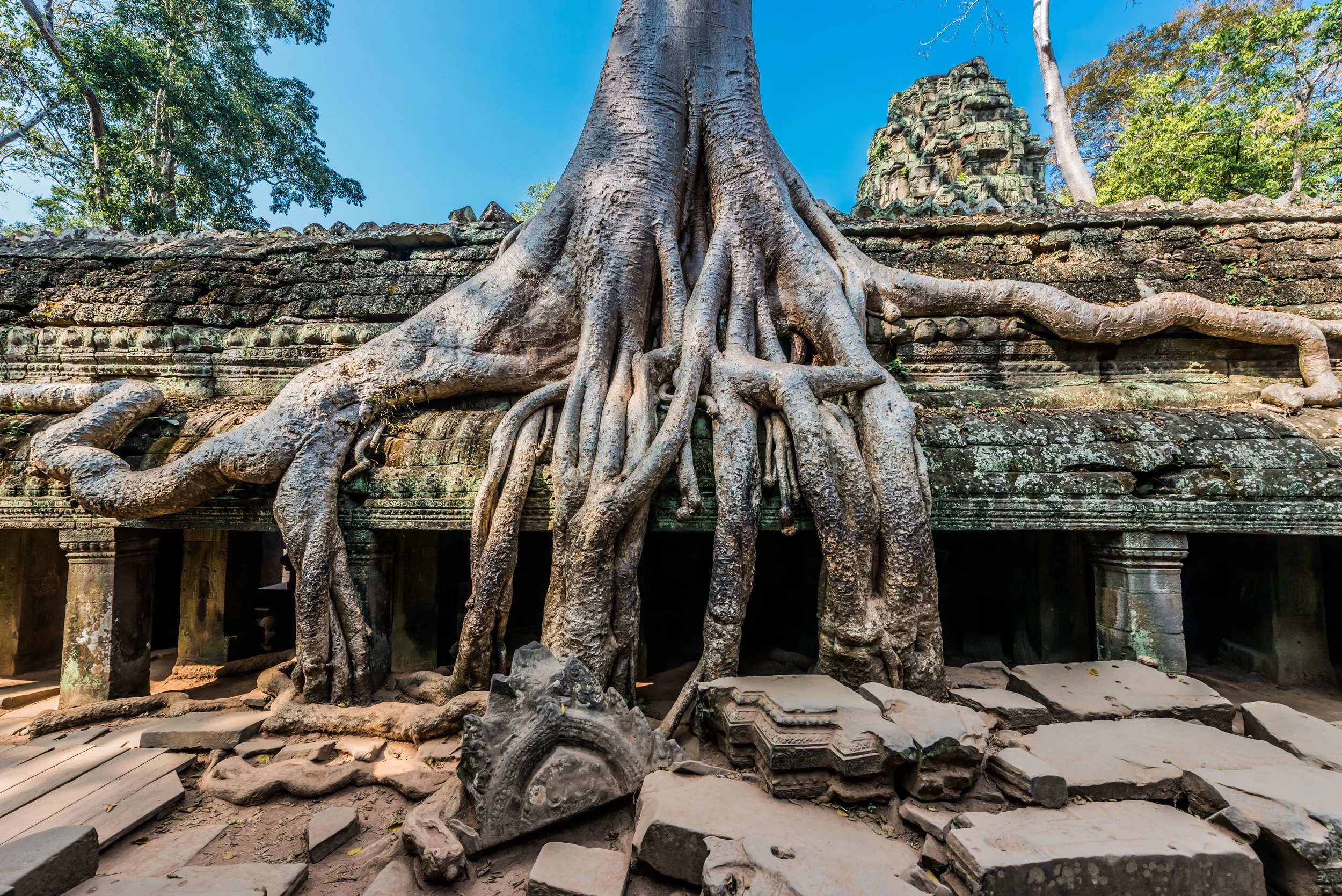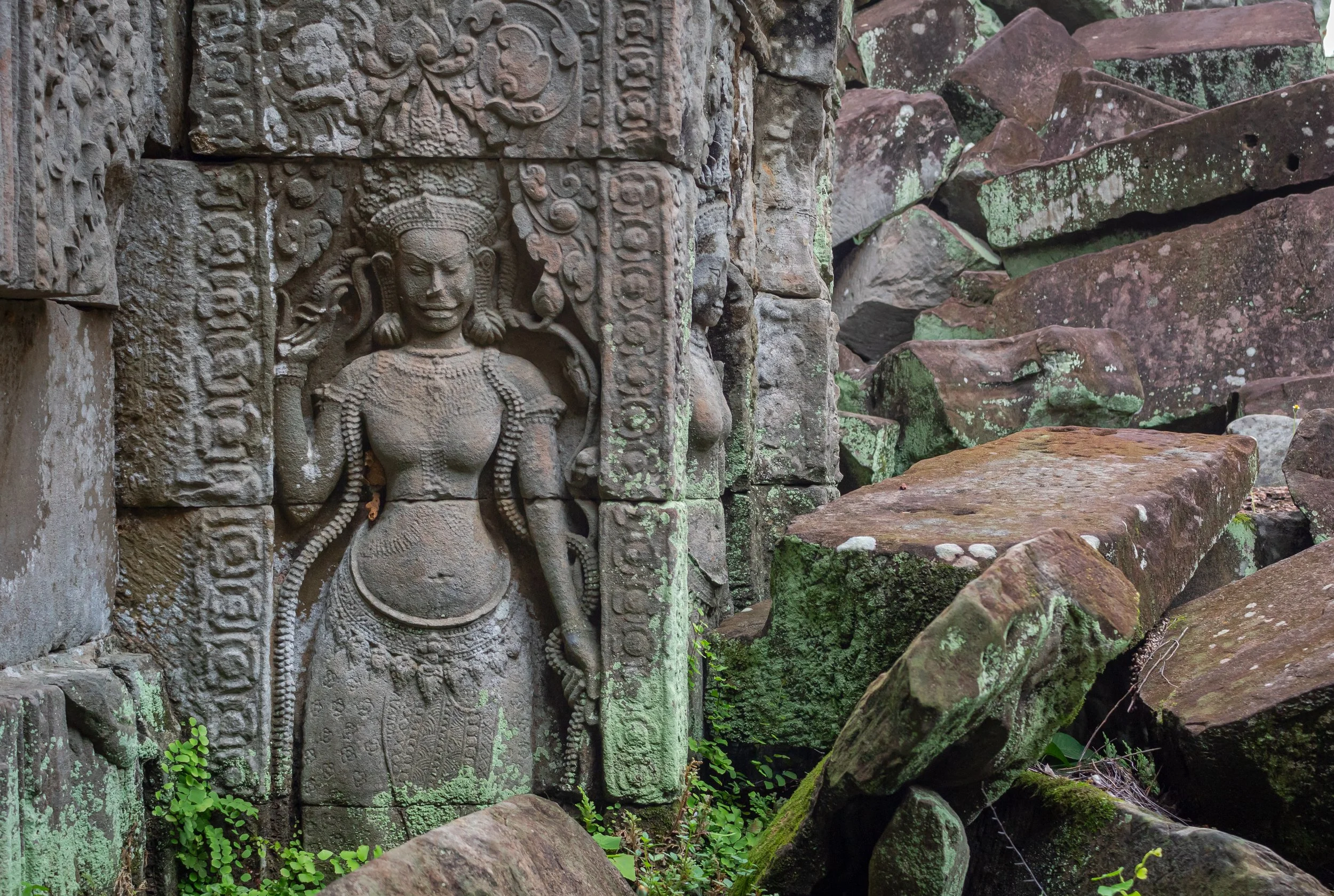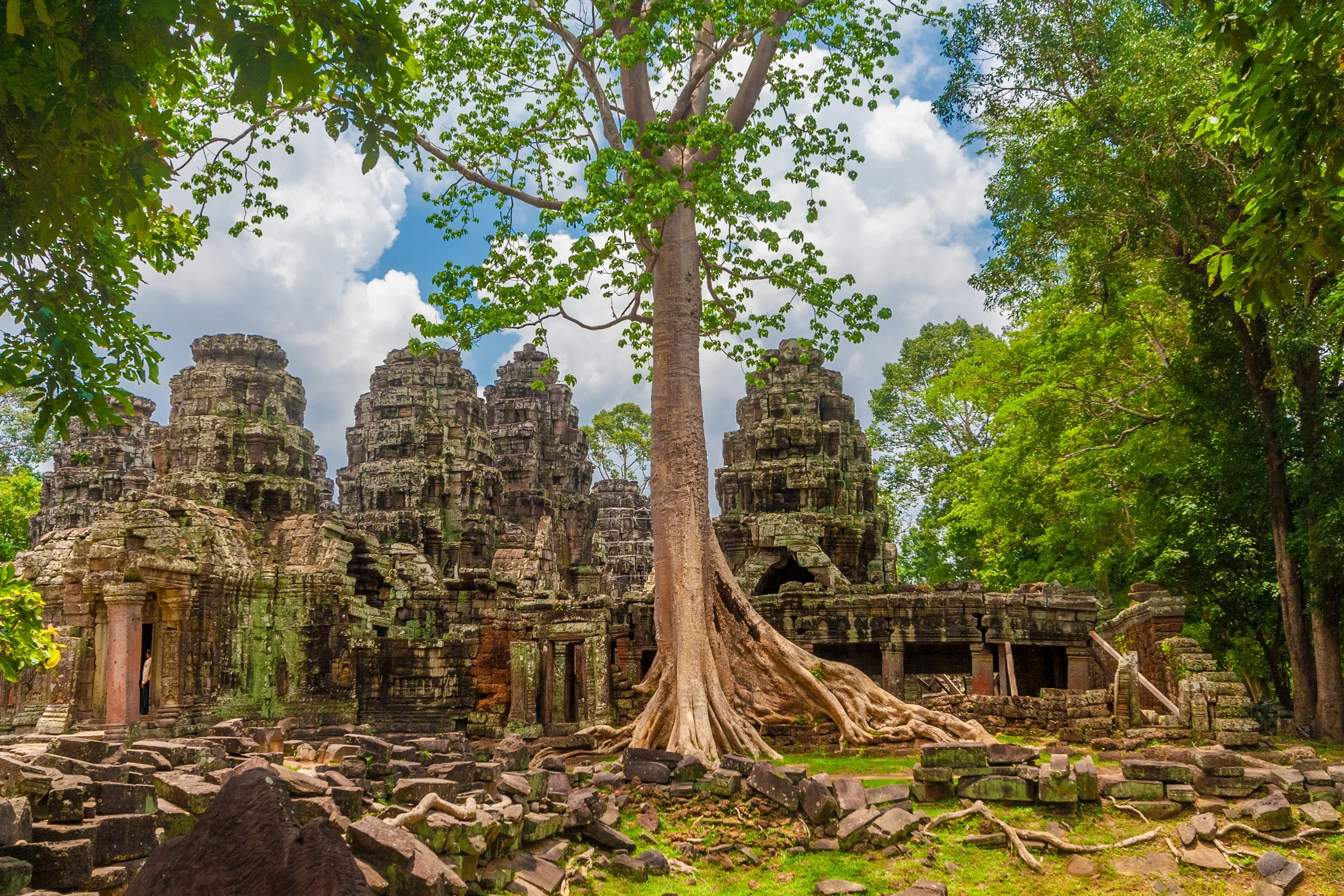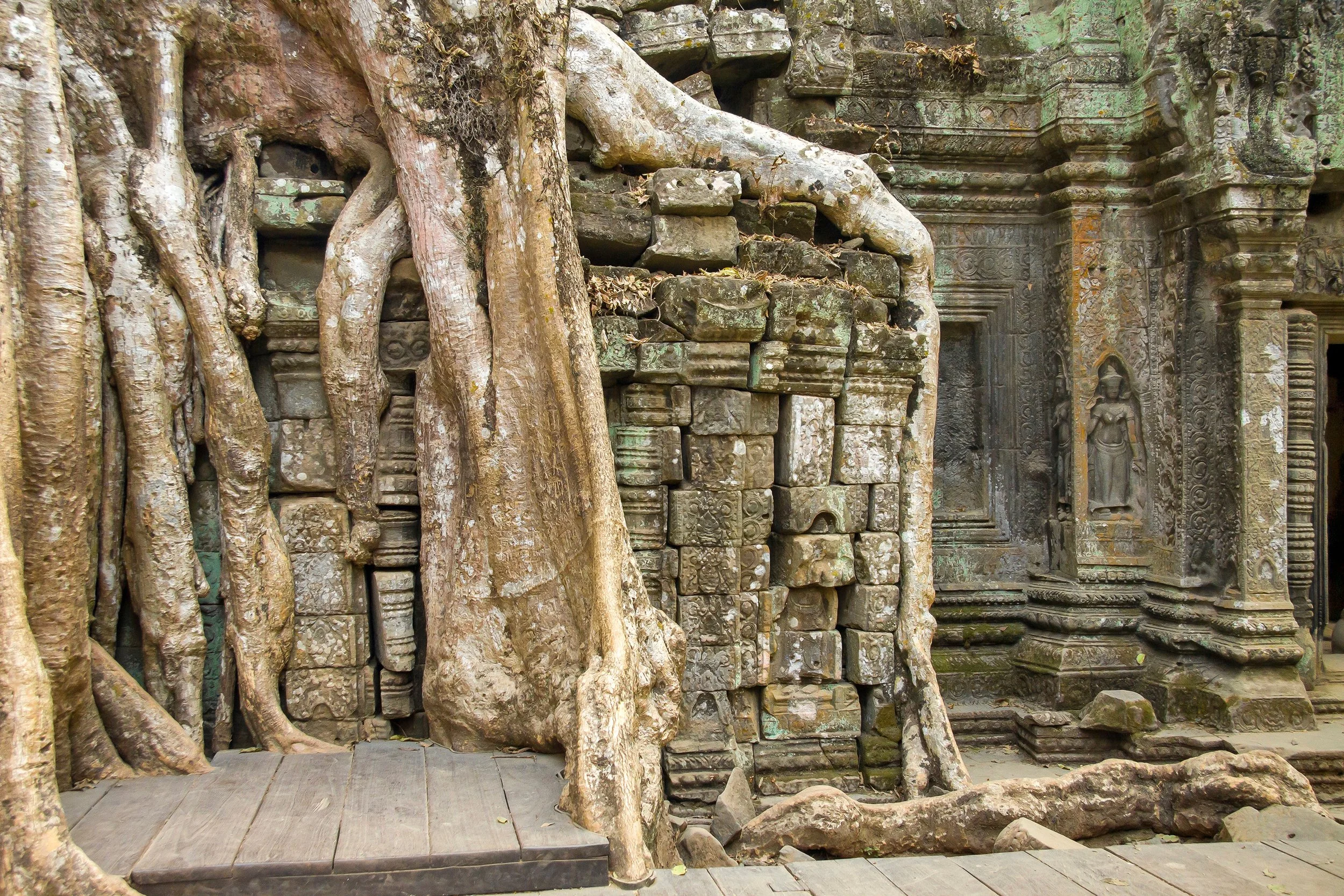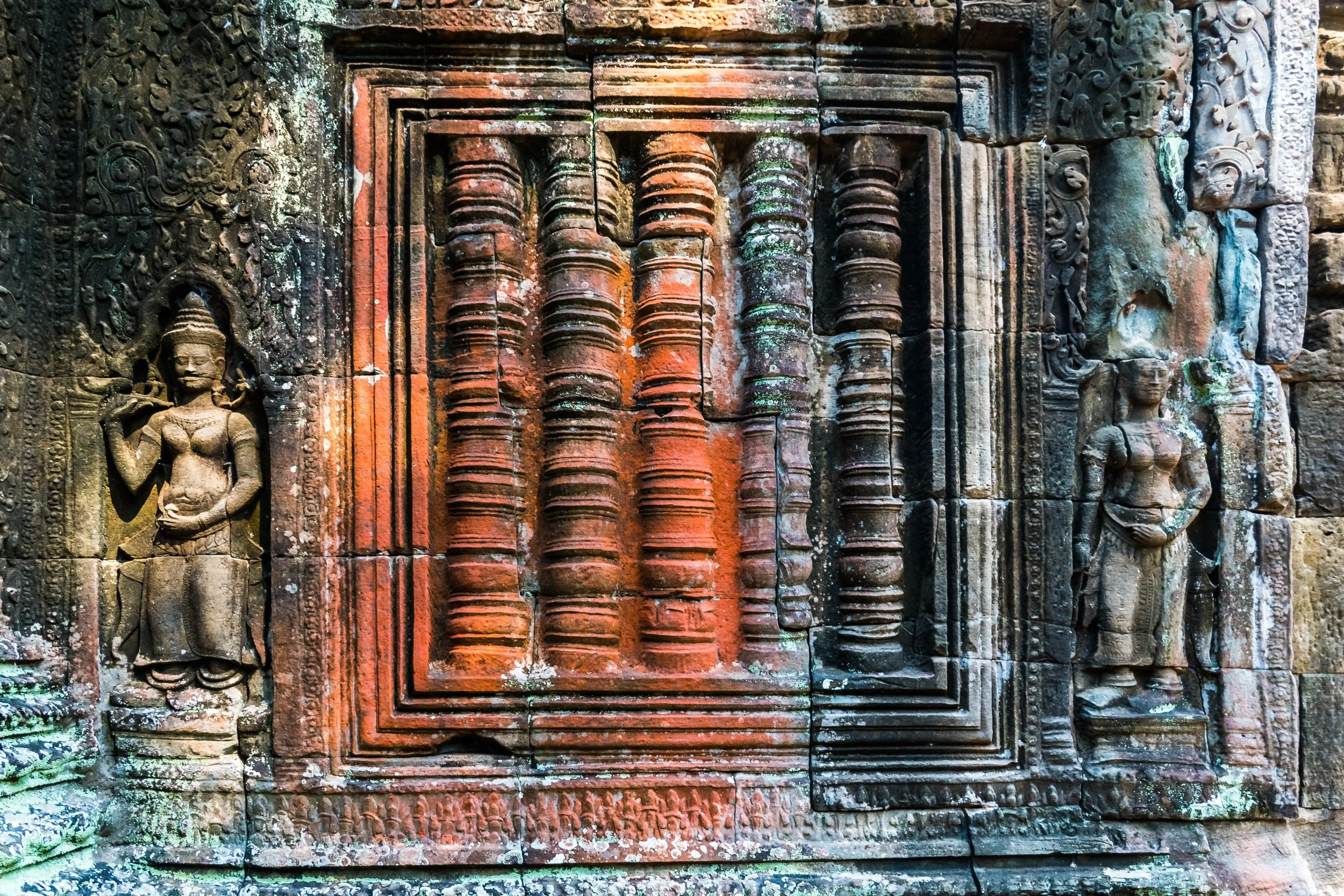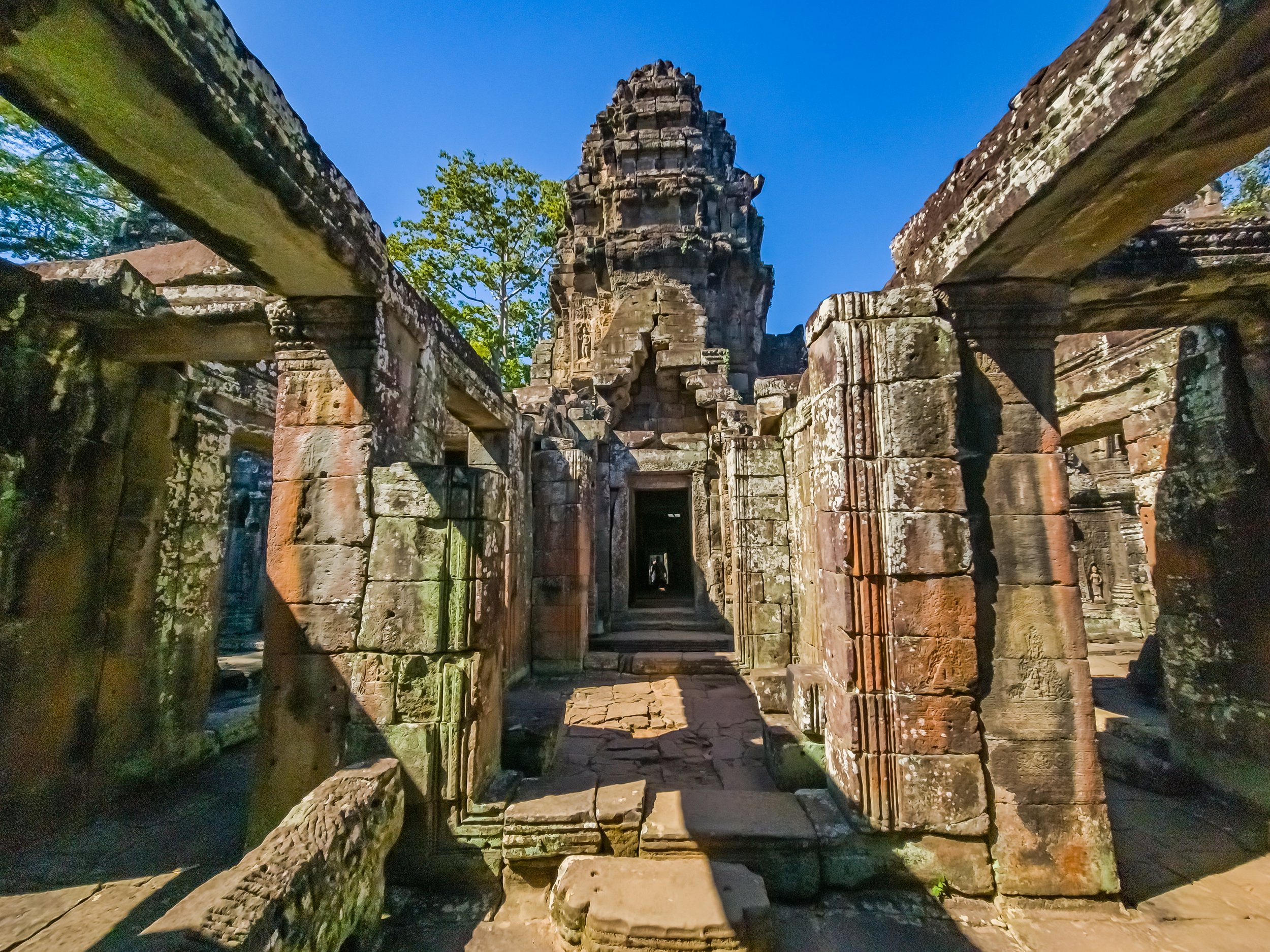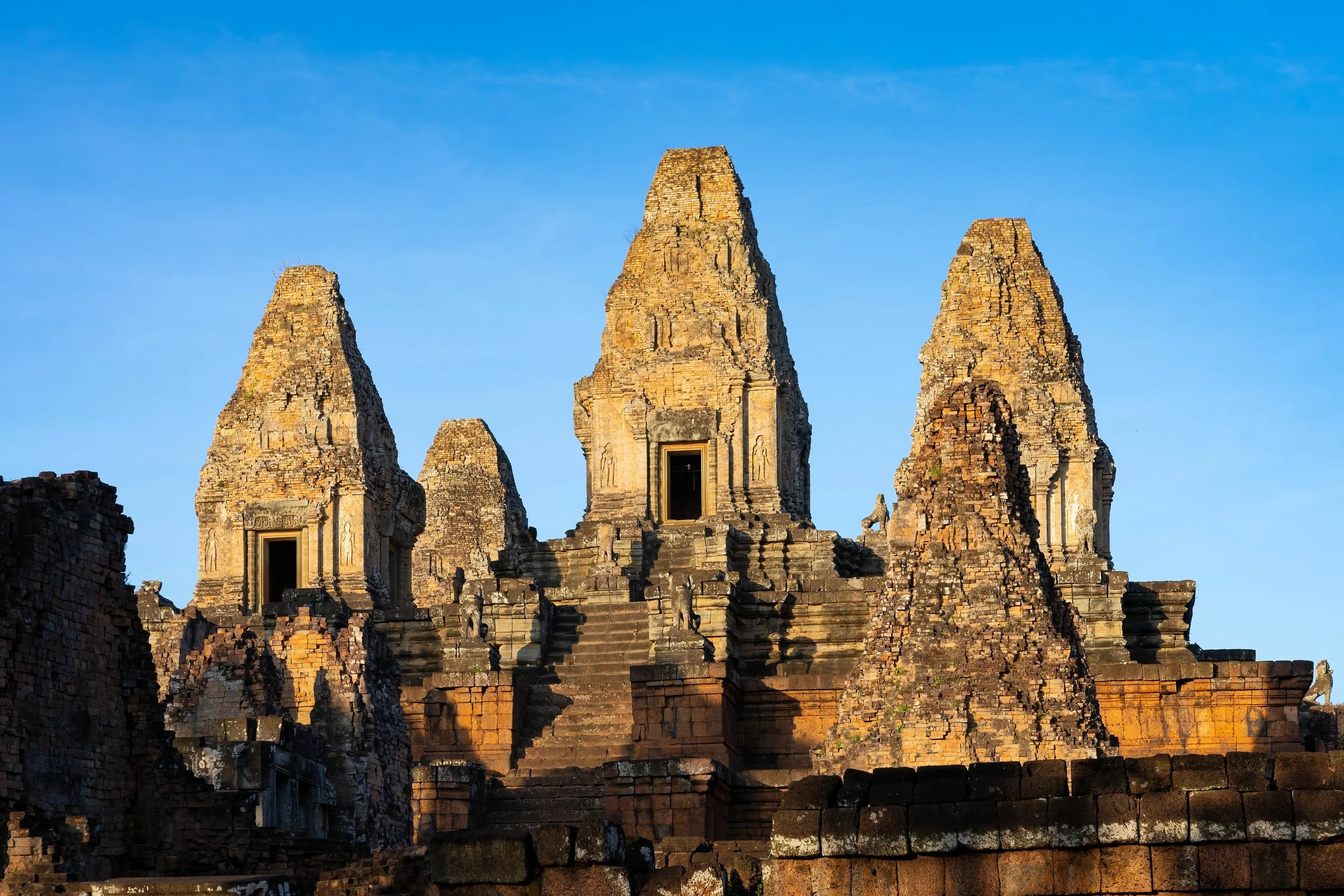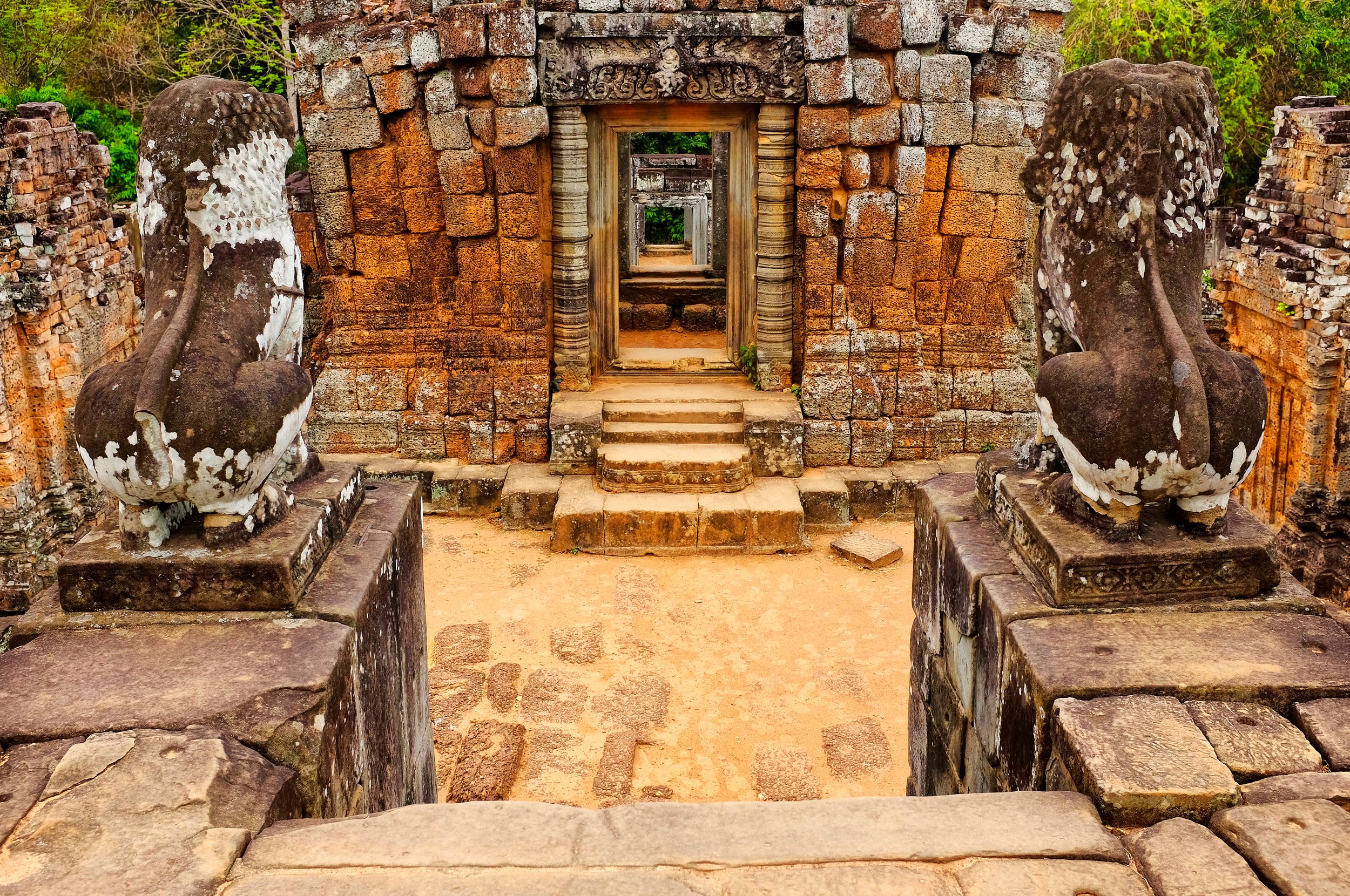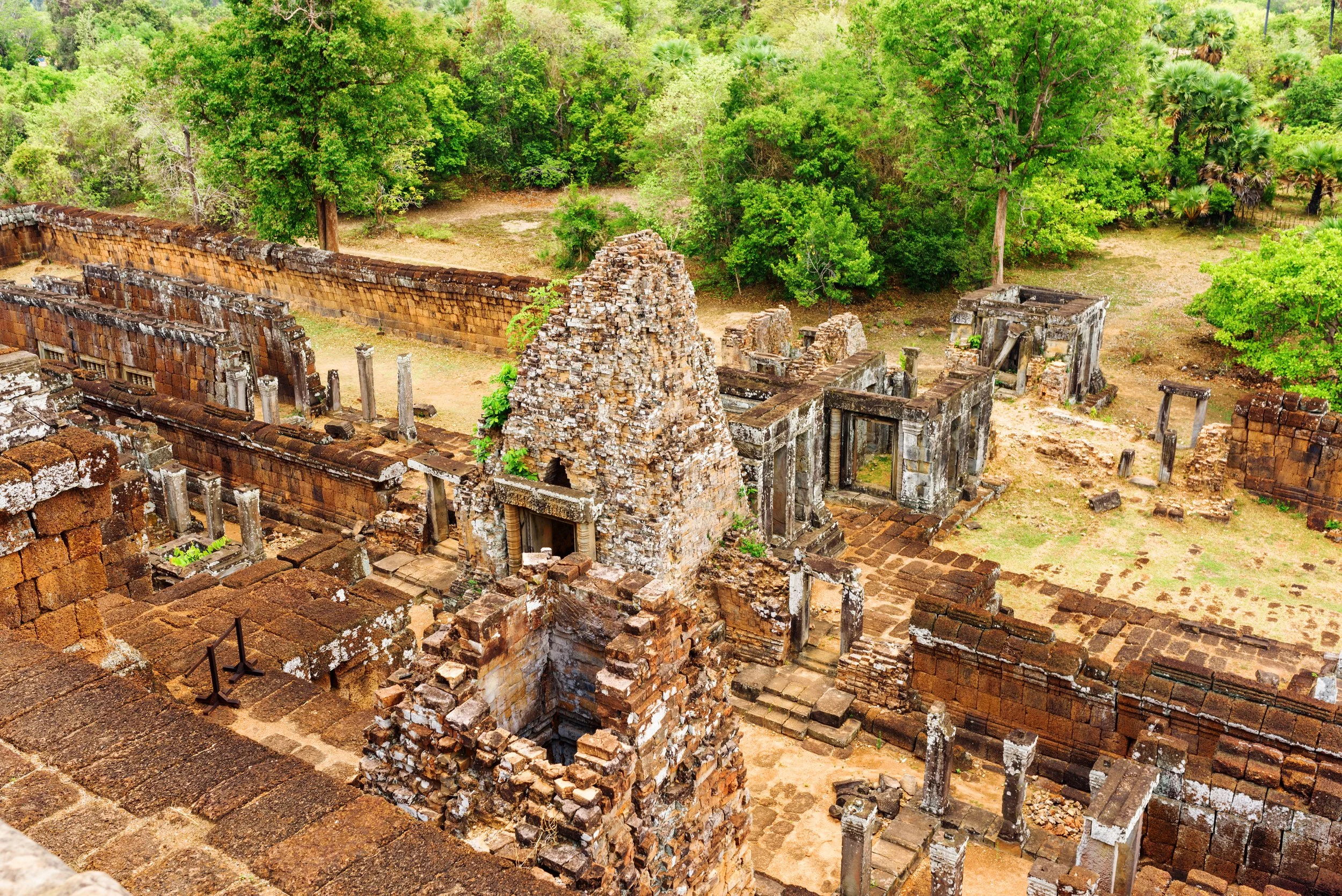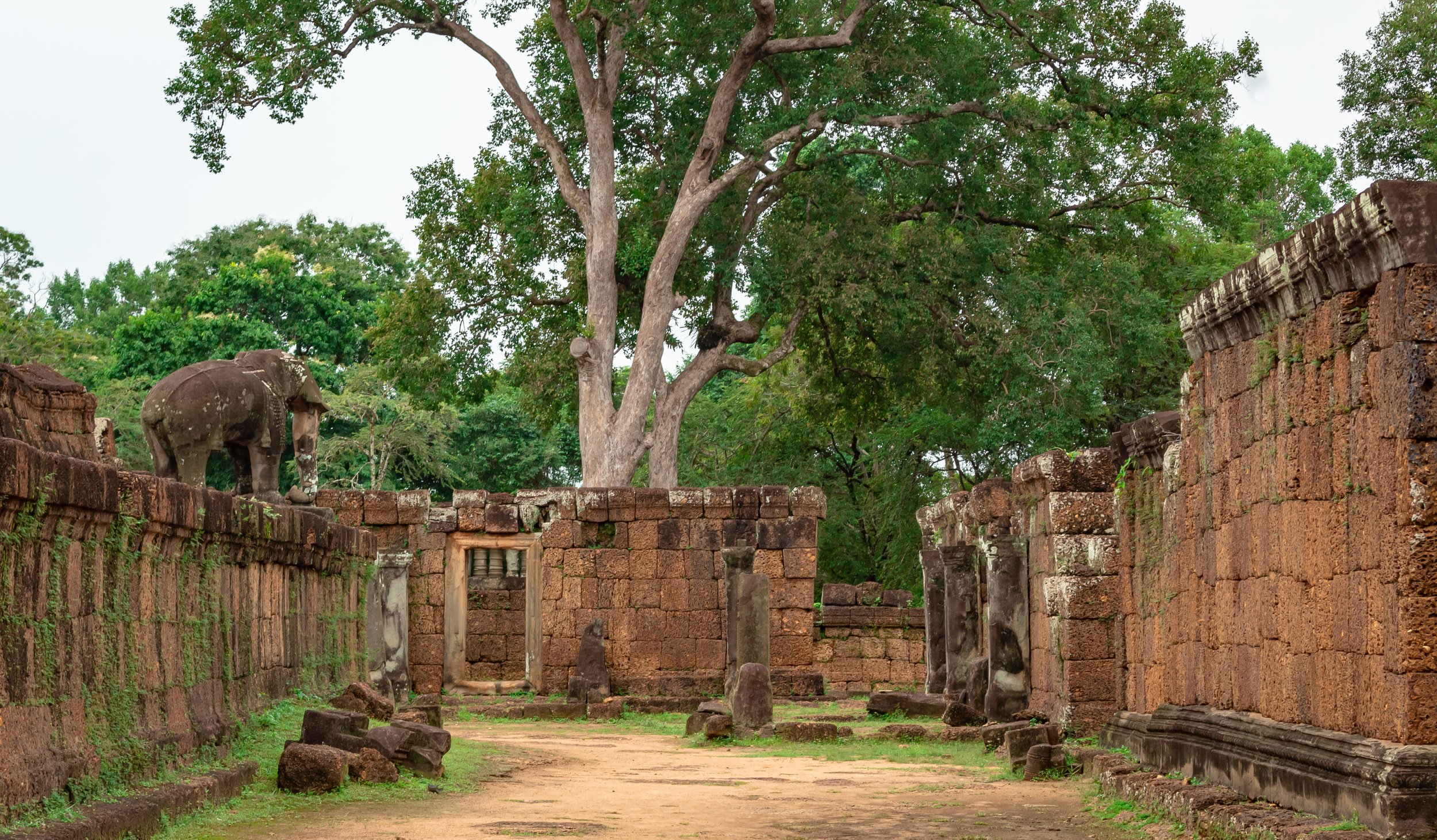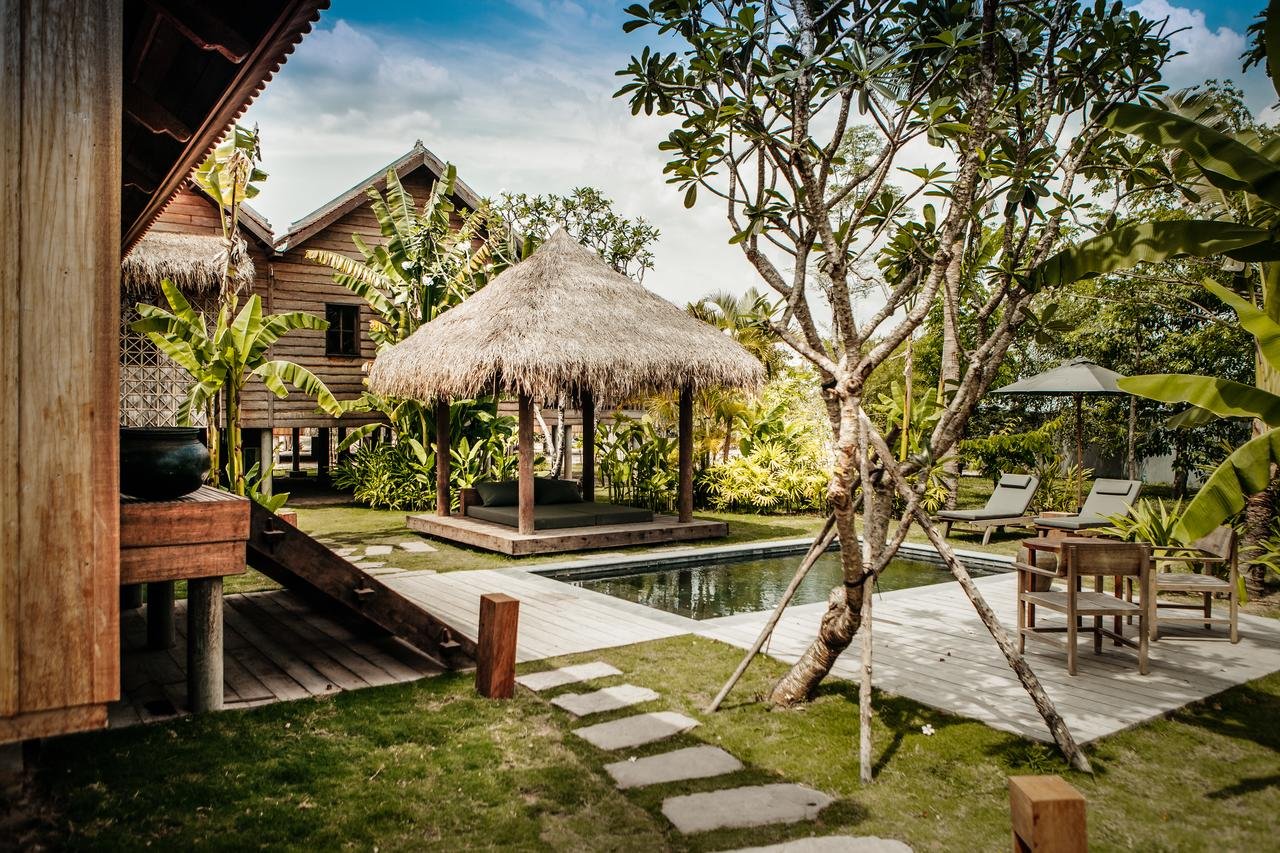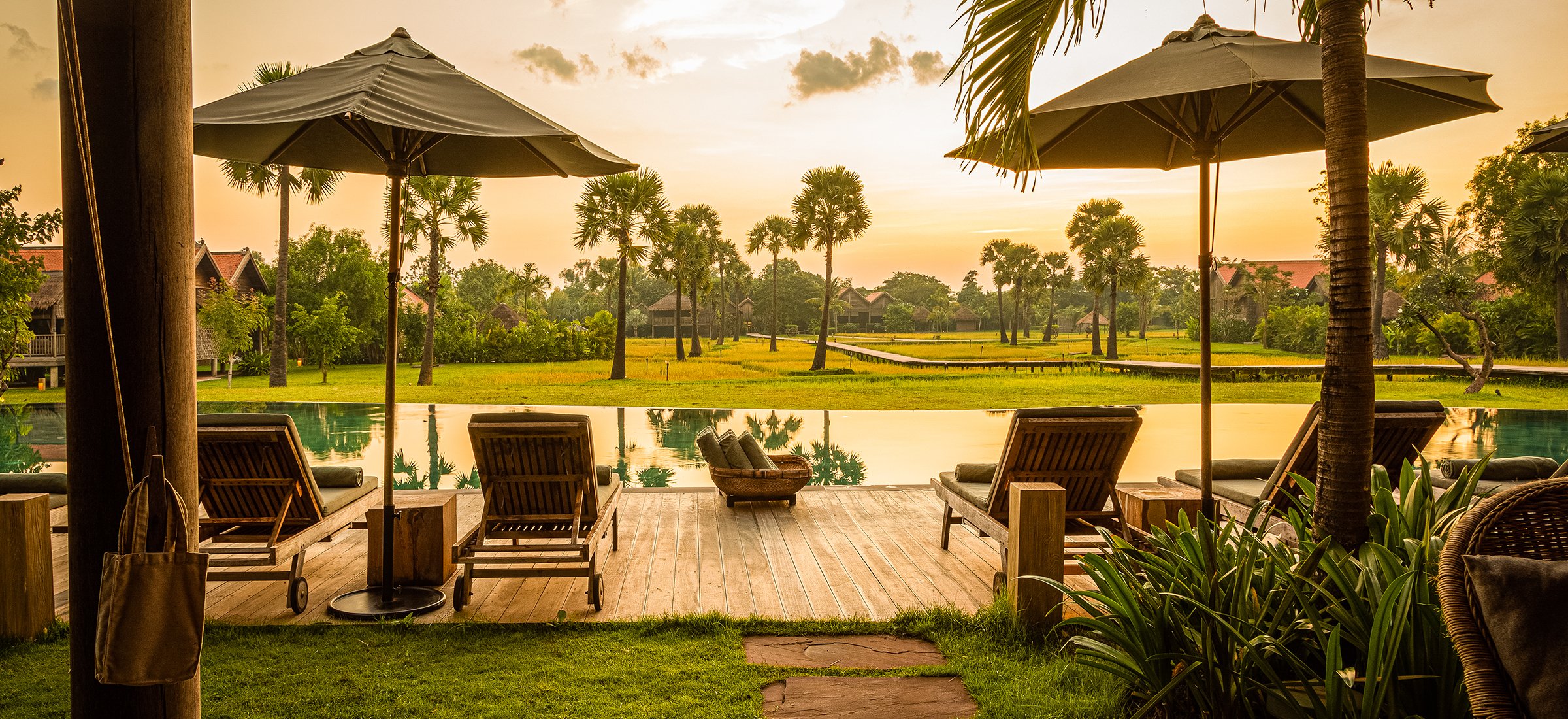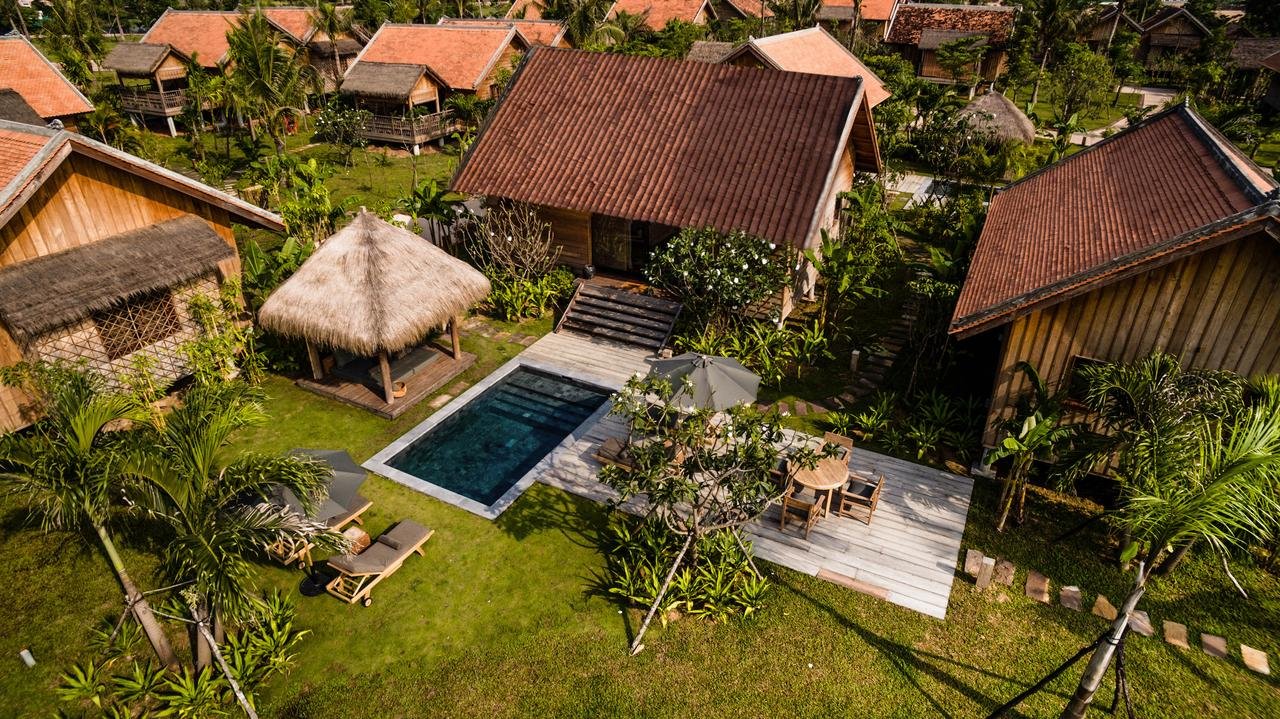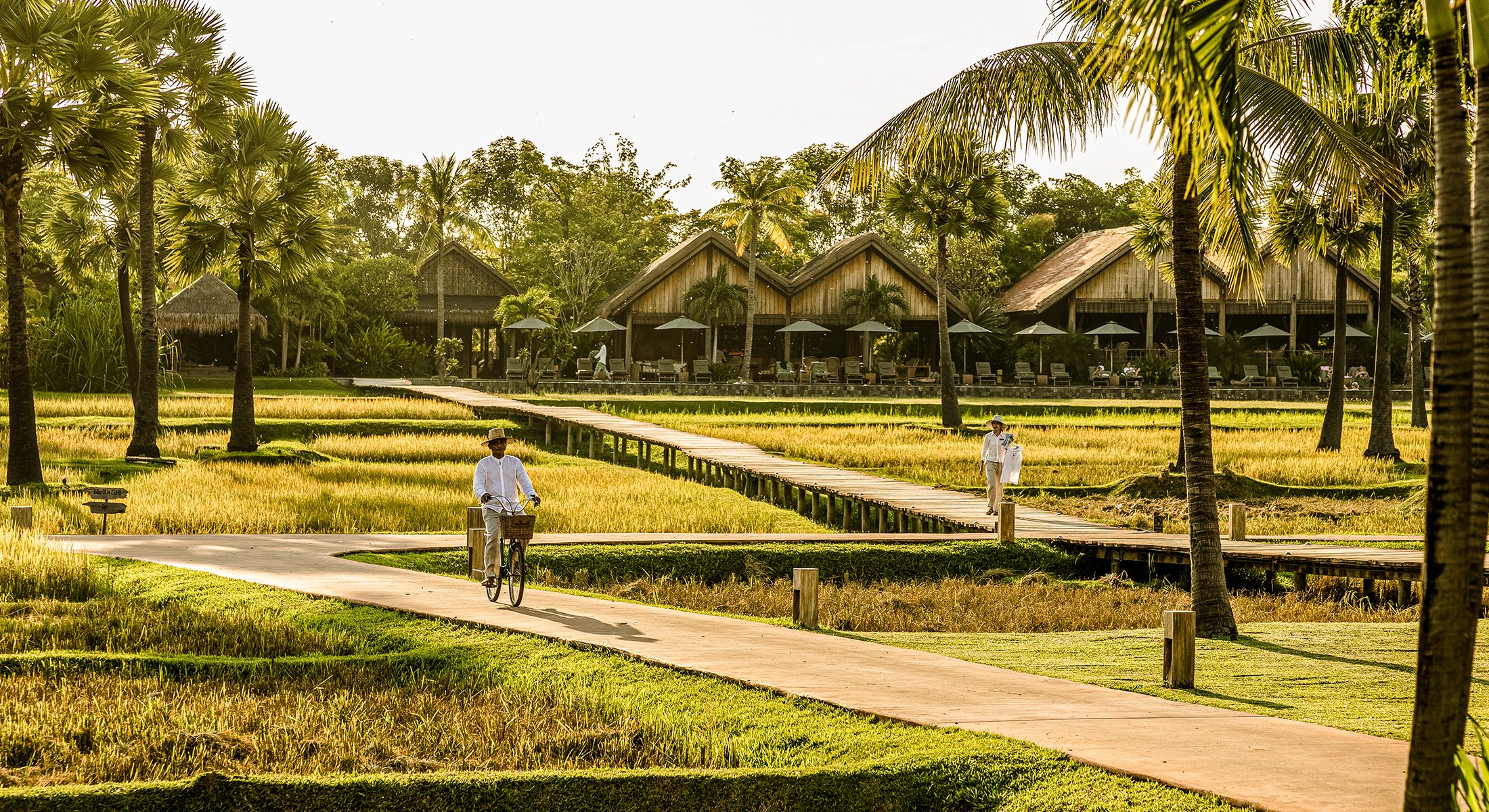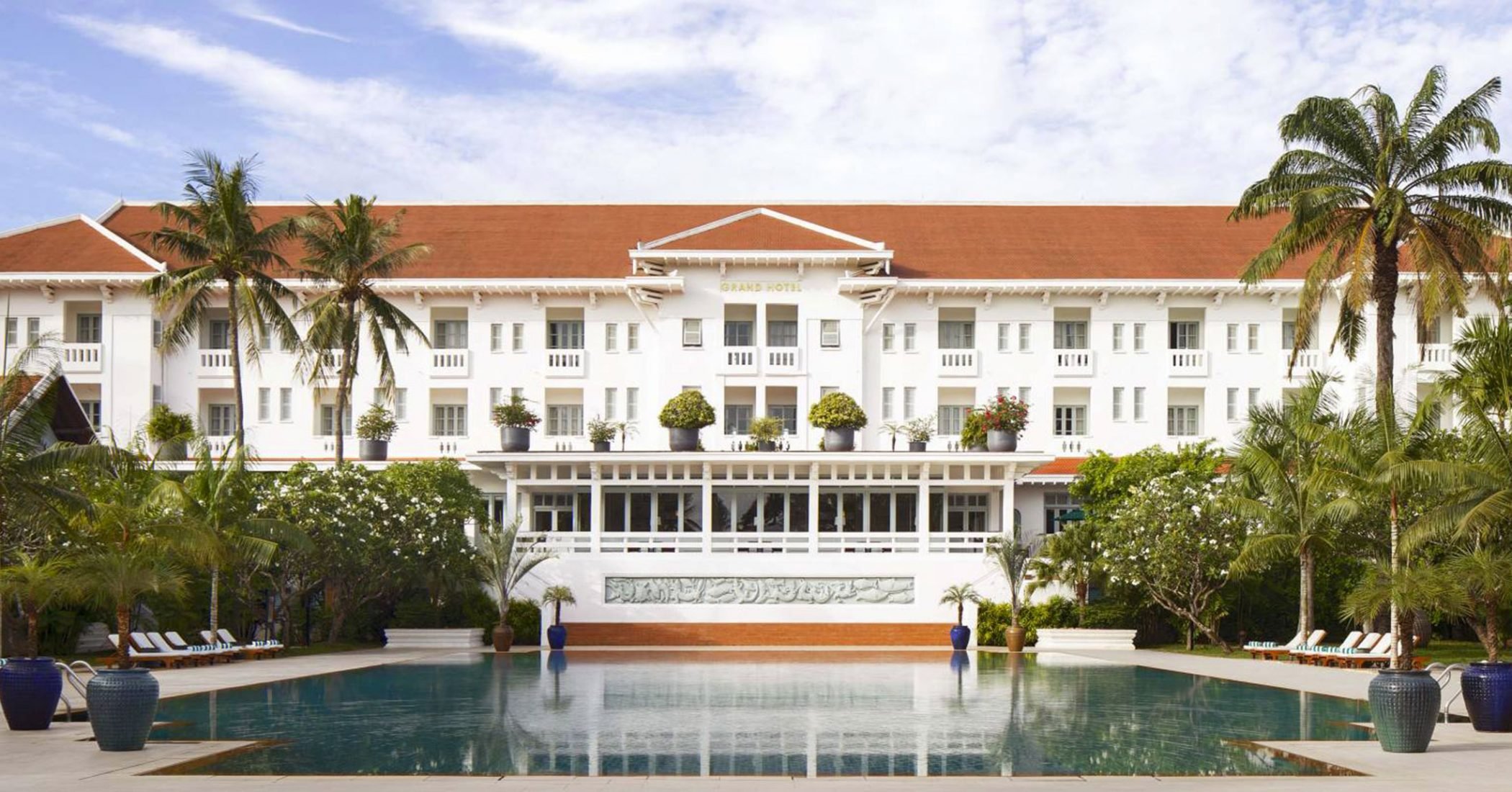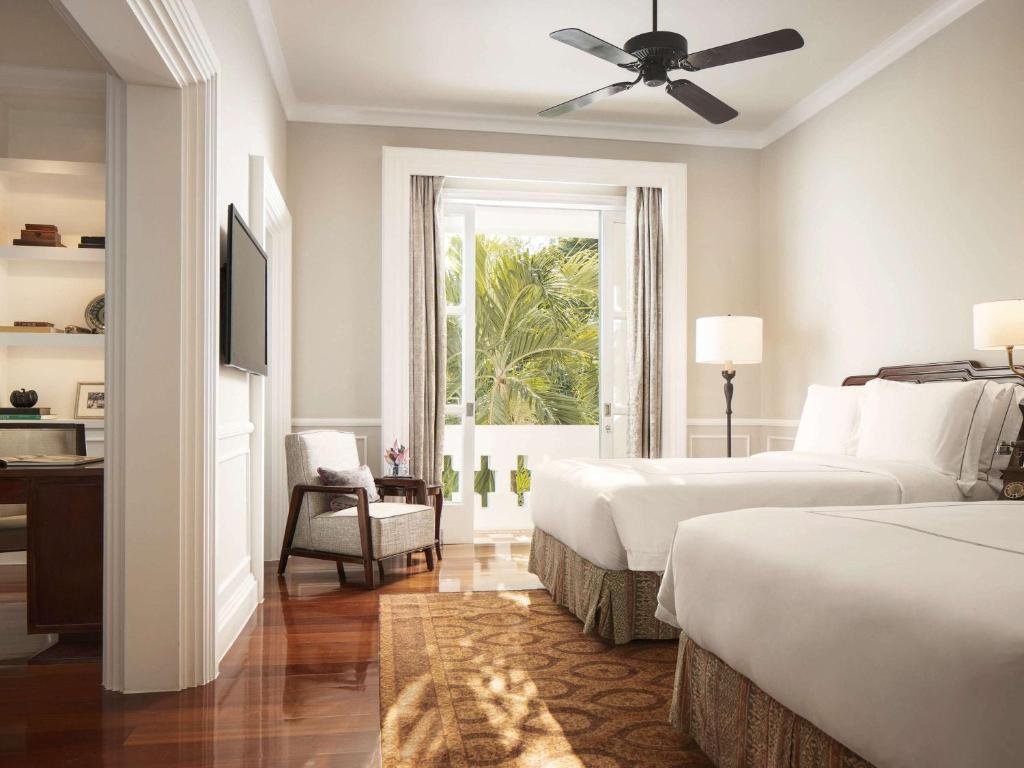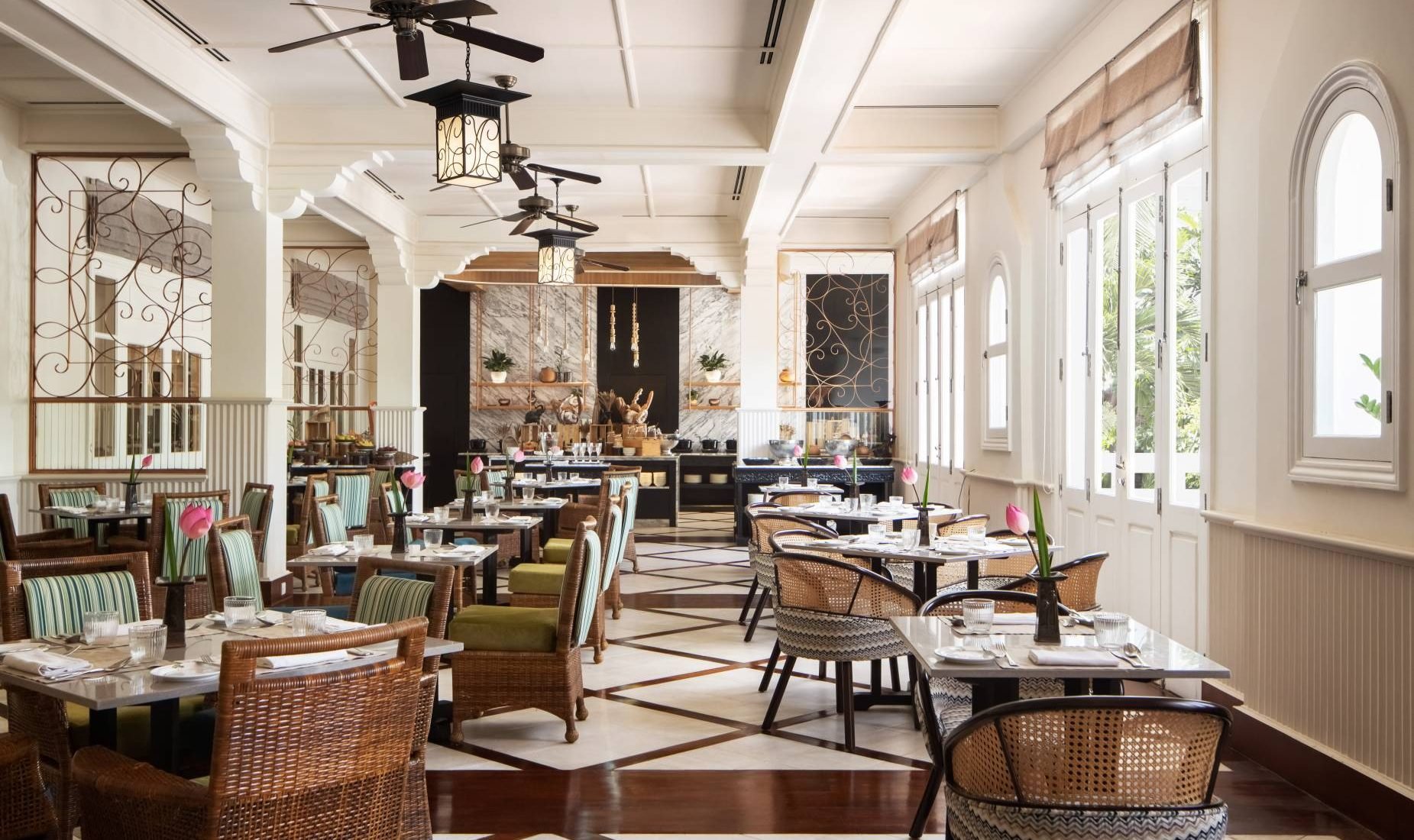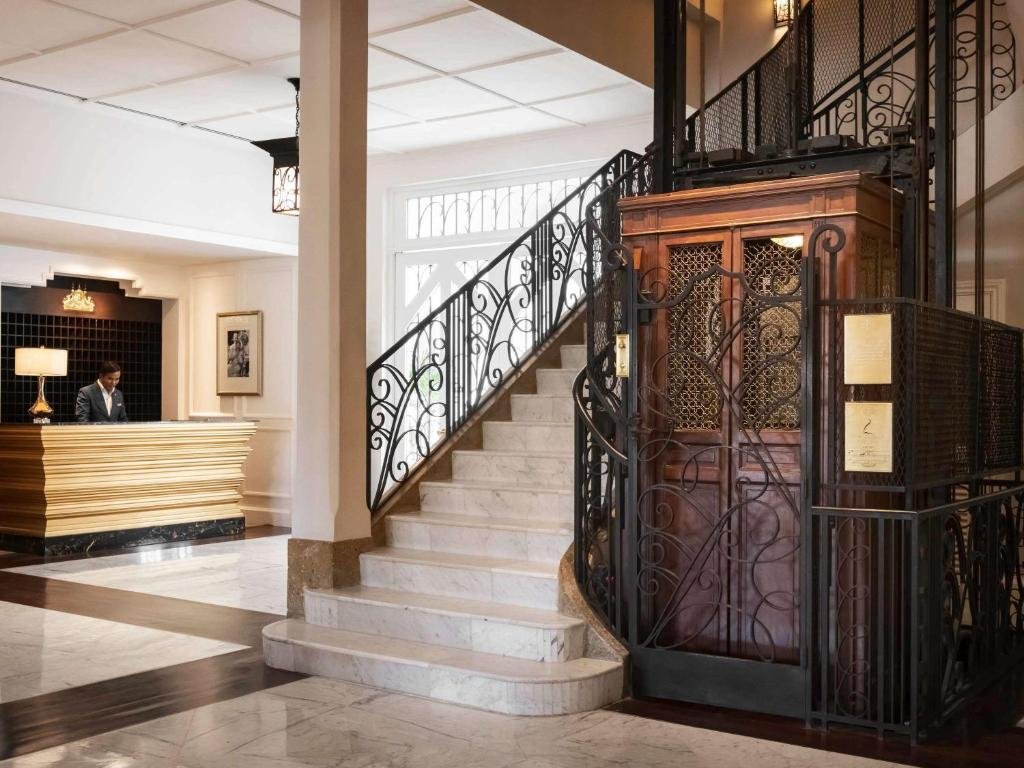Visiting the Temples of Angkor
The term “Angkor Wat” conjures images of crumbling temples buried deep in the jungle, sometimes with Angelina Jolie skulking around in cargo shorts. But Angkor Wat itself is just one of 72 individual temples within the Angkor Archeological Park, a UNESCO World Heritage Site in Cambodia’s Siem Reap province, and while it is the single largest temple within the Park (in fact, at 400 acres, it’s the largest religious site in the world), during a visit to the temples, it will just be one of the many places that will drop your jaw.
The temples of Angkor are one of the most popular tourist destinations in Southeast Asia, so traveling with a private guide and driver is a must for making sure you’re not just stuck in a queue of thousands of people trying to get the same photo. Below, we’ve highlighted five temples that are must-visits for any trip to Angkor – think of this list as a starting point for parsing the vast cultural and religious history that is writ large (often literally) across these incredible structures.
Angkor Wat
The big kahuna, Angkor Wat rivals the Taj Mahal and the Colosseum when it comes to buildings that are instantly recognizable the world over. Built over 37 years (an astonishingly short amount of time given the vast size and impossible level of detail), Angkor Wat is built of sandstone and laterite, and its layout reflects Hindu cosmology. Thousands of scenes from Hindu mythology are carved in bas relief on the walls, but when Khmer society and the ruling class adopted Buddhism in the 12th century, the temple became a Buddhist place of worship. It’s amazing to find the spots within the carving where depictions of Vishnu have been removed and replaced with Buddhist symbols, reminding visitors more than a thousand years later that change is constant, even within a structure that feels so colossal.
As the main façade of Angkor Wat faces west, the most popular time to visit is for sunrise, when, on a clear day, the sun emerges like a hazy persimmon from behind the dramatic towers. This requires a 5AM hotel departure, and those dramatic images you’ve seen in National Geographic are far from guaranteed – Cambodia’s heat means clouds are common, and if the sun does decide to show off, there are lots of other people trying to get the same shot. So don’t hang the success of your trip on whether you can get the iconic photo – the magic of Angkor Wat is inside the temple walls, where the scale of the complex quickly absorbs the crowds, and you can spend several hours wandering the halls and galleries, marveling at the level of artistry.
Bayon
Approximately 2 miles from Angkor Wat, you’ll find Angkor Thom, a 12th century city that proved the last capital of Angkorian rule. The temples built herein by Jayavarman VII were originally constructed as Buddhist temples (as opposed to being converted from Hindu), and the spiritual center of Angkor Thom is Bayon temple. The striking feature of Bayon is the many faces – 37 towers stand today, and most have four Buddha faces staring out across the jungle. The other key feature of Bayon are the beautiful bas-relief walls – over half a mile of scenes have been carved into the stone, with the outer gallery depicting everyday life (a naval battle and cockfighting being two notable tableaus), and the inner gallery concerned with mythological events.
There’s no vantage point at Bayon equivalent to Angkor Wat’s vast lawns, but the temple unfolds as you explore and rewards close viewing.
Ta Prohm
Arguably the most theatrical of the temples at Angkor, Ta Prohm is where you’re going to find those gnarled trees slowly reclaiming the stone for the jungle. This is the “Tomb Raider Temple,” where Angeline Jolie as Lara Croft landed after falling through the earth in the 2001 movie. Unlike Angkor Wat or Bayon, the approach to Ta Prohm is through the jungle, with strangler figs and hanging vines swooping above. When the silk cotton trees that have taken hold of the stone walls appear before you, you know you’ve reached the walls of Ta Prohm.
The knobby, surreal roots of the silk cottons and the eerie webbing of the parasitic strangler figs snake throughout the site, and as the temple was built without mortar, the centuries of growth have wreaked picturesque havoc on some of the walls. Nature’s the boss here, and you’ll find piles of downed stone around every corner, much of it awash in shades of rust or teal thanks to years of lichen growth. When it comes to the coolness factor, it’s hard to beat Ta Prohm.
Banteay Kdei
Built by the same king as neighboring Ta Prohm, Jayavarman VII, many aspects of the two temples are similar, including the approach through the jungle and the snaking trees that seem they may at any second snatch what remains of the stone and yank it away into the undergrowth, out of time and history. But while Ta Prohm is (justifiably) popular with visitors looking to live out their Lara Croft fantasy for Instagram, Banteay Kdei is far less visited, so you can almost convince yourself you’re the first person to hack your way through the vines and enter the temple in decades. Inside, the intimate scale of the chambers and beautiful carved figures feel like they’re yours alone to enjoy. Banteay Kdei can be approached from the east or west entrance; we recommend coming from the west, which is like entering through the back door, and offers the most drama.
Pre Rup
The oldest temple on this list, the striking color of the red brick stepped platforms of Pre Rup make the site stand apart from other structures you’ll visit during your time at Ankor. Pre Rup was likely a funereal temple, and the courtyard is centered around a pyre. Visitors can climb to the top of the structure, which sits in the center of a flat field. In contrast to the ethereal towers of Angkor Wat, the baroque decorations of Bayon, and the surreal treescapes of Ta Prohm and Banteay Kdei, Pre Rup calls to mind the Stepped Pyramid at Saqqara, in Egypt, and the mythological heft of Chichen Itza. This aesthetic variation highlights the vastness of human achievement represented in the temples at Angkor and the incredible cultural and historical richness tucked into this corner of Cambodia.
Where to Stay
Phum Baitang
On the outskirts of Siem Reap, down a dusty side road, you’ll find the oasis of Phum Baitang, built in 2015 by Zannier Hotels to mimic a local Khmer Village. 45 suites are tucked into wooden houses on stilts; the piece de resistance is a 100-year-old farmhouse, which was moved here from its original location in a rural village and now houses the sunset bar. Phum Baitang is a proper Cambodian resort, with a central bridge over a working rice field leading to a picture-perfect pool. At night, the grounds twinkle with candles and lanterns; by day, the pathways are perfect for a leisurely bike ride. While Phum Baitang is a good 15 minutes from downtown Siem Reap, it’s an appropriately beautiful and peaceful homebase for travelers looking to appreciate the aesthetic wonders of the region.
Raffles Grand Hotel D’Angkor
Smack dab in the middle of the city, the Grand Hotel D’Angkor is the grande dame of Siem Reap. While Hollywood stars may hide themselves away at Phum Baitang, when US Presidents visit, they stay at the Raffles. And while the 1930s tradition of ferrying guests from the hotel to the temples of Angkor by elephant may be no longer, the restored original elevator, vintage rotary phones, and dark, clubby Elephant Bar (which serves a fabulous g&t after a long, dusty day of exploring) offer plenty of glamour. Fans of historic properties like the Mandarin Oriental Bangkok and the Metropole Hanoi will feel right at home at the Raffles.

